
The meaning and origin of the expression: A journey of a thousand miles begins with a single step
A journey of a thousand miles begins with a single step
What's the meaning of the phrase 'a journey of a thousand miles begins with a single step'.
The proverb 'a journey of a thousand miles begins with a single step' puts forward the notion that, however difficult a task is, you can only complete it if you first start it.
What's the origin of the phrase 'A journey of a thousand miles begins with a single step'?
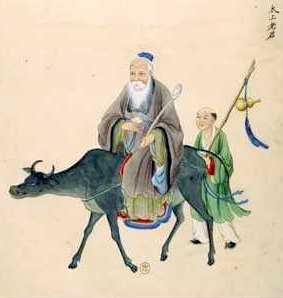
'A journey of a thousand miles begins with a single step' is different in that it actually was coined in China. Any saying that is associated with ancient China is generally labelled as being the work of Confucius. This one isn't.
Westerners like myself, who don't speak Chinese and have no real knowledge or understanding of Chinese history and culture, need to tread carefully when making pronouncements about who did what in China over two thousand years ago. What is generally accepted by scholars with a better grasp of Chinese and China is this...
The proverb 'A journey of a thousand miles begins with a single step' is first found in the Tao Te Ching , which is a classical Chinese Taoist text usually credited to Laozi (a.k.a. Lao Tzu), and probably written between the 4th and 6th century BC. The original text is:
"A journey of a thousand li [a Chinese mile] starts beneath one's feet"
The Tao Te Ching, is not a neatly bound and dated book with a definitive ISBN number that you might buy on Amazon. There are numerous fragmentary copies differing in content, language and authorship and dating over several centuries. The authorship is uncertain and disputed and some scholars dispute even the existence of Lao Tzu, claiming him to be mythical sage rather than a real living person.
We might usefully consider the Tao Te Ching as having a similar standing in Chinese culture as Aesop's Fables has in the West. It is now widely believed that Aesop's Fables weren't written by one author and, even if they were, it wasn't Aesop who may well not have existed in the flesh.
The 'self-help' nature of the phrase has led to some parody, including this from the Anglo/Australian writer Kathy Lette:
A journey of self-discovery starts with a single step… But so does falling down a flight of stairs.
See also: the List of Proverbs .
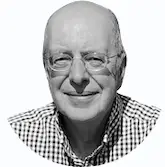
By Gary Martin
Gary Martin is a writer and researcher on the origins of phrases and the creator of the Phrase Finder website. Over the past 26 years more than 700 million of his pages have been downloaded by readers. He is one of the most popular and trusted sources of information on phrases and idioms.


The Longest Distance in the World Is From the Head to the Heart
The longest distance in the world.
Posted August 12, 2008

Lao Tzu said that the first step on the path to wisdom is the ability to say, "I don't know." We like to believe that we know a great many things. We understand far fewer of those things, however, than we might like to admit. Knowing a thing and owning it - truly being invested in actions and outcomes - are two different things. True wisdom is, ultimately, not in the knowing, but in the doing.
The longest distance in the world is from head to the heart. Taking what we know and turning it into a demonstrable action, something that will elicit change in our lives and the lives of those around us, is true wisdom. The ability to transform knowledge into action is oftentimes quite the hurdle.
As long as we maintain a rational perspective on our personal condition, we will remain stuck. In psychological jargon, this is called "isolating". It means walling off an emotionally charged situation and thinking, rather than feeling, it through. No emotion , no investment - no investment, no movement. It's really pretty simple stuff.
The willingness to change is driven by investment and emotion. We may know that we shouldn't take that drink, but we still do it. Why? We aren't invested in the outcomes and consequences, yet. It is not until we feel a thing - moving from the head to the heart -- that we become invested in it. That is part of the reason that we often need to confront a crisis - or create a crisis -- before we create movement.
So, how do we change our relationship to change? By using the very thing that is the obstacle to our change as a tool for eliciting change.
Think about something you know is an issue for you - I drink too much, I'm passive-aggressive , I anger too easily, I am intolerant of change, etc. Now, think about how you feel when that thing is happening. Make an agreement with yourself that you will pay attention to that feeling.
The next time that feeling arises, it's a fair bet that you will respond in the way that you have in the past, because human beings are nothing if not consistent. When that feeling arises, you now get to say, "I'm not going to do this." instead of "Here we go again."
This idea goes back to our conversation about Yoga as a medium for change , as moving from needs to feelings and emotions to action is coincident with egocentric, ethnocentric and geocentric worldview , as well as movement from the first, to the second, to the third chakras.
It is no accident that addicts or individuals who are acting in ways that diverge from the social norm are consistently regarded as selfish - i.e., egocentric. Change is tied to thinking about the consequences of our actions, which means thinking about others - i.e., ethnocentric. Action means imposing ourselves upon the world in which we live in a productive way - i.e., geocentric - but, in order for us to do that, we must first be healthy and well constituted ourselves. That means learning to be self-ish .
It all comes down to choice. The decision to evoke change can be one driven by raw emotion or it can be a conscious, rational effort that invokes feeling through thoughtful process. Either way, we need to get from the head to the heart before we can create movement and proscribe for ourselves genuine transformation.
© 2008 Michael J. Formica, All Rights Reserved
My Psychology Today Therapists Profile My Website Email Me Directly Telephone Consultations

Michael J. Formica, M.S., M.A., Ed.M. , is a psychotherapist, teacher and writer. He is an Initiate in the Shankya Yoga lineage of H.H. Sri Swami Rama and the Himalayan Masters.
- Find a Therapist
- Find a Treatment Center
- Find a Psychiatrist
- Find a Support Group
- Find Teletherapy
- United States
- Brooklyn, NY
- Chicago, IL
- Houston, TX
- Los Angeles, CA
- New York, NY
- Portland, OR
- San Diego, CA
- San Francisco, CA
- Seattle, WA
- Washington, DC
- Asperger's
- Bipolar Disorder
- Chronic Pain
- Eating Disorders
- Passive Aggression
- Personality
- Goal Setting
- Positive Psychology
- Stopping Smoking
- Low Sexual Desire
- Relationships
- Child Development
- Therapy Center NEW
- Diagnosis Dictionary
- Types of Therapy

Understanding what emotional intelligence looks like and the steps needed to improve it could light a path to a more emotionally adept world.
- Coronavirus Disease 2019
- Affective Forecasting
- Neuroscience
Lao Tzu: 'The journey of a thousand miles begins with one step.'
The journey of a thousand miles begins with one step.
The quote by Lao Tzu, "The journey of a thousand miles begins with one step," encapsulates an essential and profound truth about life and achieving our goals. It emphasizes the significance of taking that initial step, no matter how small or insignificant it may seem, as it is the catalyst that sets us on our path toward progress and transformation.At first glance, the meaning of this quote is straightforward. It suggests that any monumental endeavor, no matter how intimidating or daunting it may seem, must start with a single action. It reminds us that great achievements are not made overnight but rather through a series of consistent and deliberate actions taken over time. This quote serves as a reminder that every long and arduous journey is comprised of numerous small steps, each contributing to our overall progress.However, to truly delve into the depth of this quote, we can introduce an unexpected philosophical concept: the idea of the interconnectedness of all things. Building upon Lao Tzu's wisdom, we can explore the notion that our initial step not only sets us on our individual journey but also initiates a ripple effect, influencing the world around us.Imagine for a moment, the act of taking the first step is like dropping a pebble into a still pond. As the pebble breaks the surface of the water, it creates ripples that extend outward in ever-widening circles. Similarly, when we take that first step towards achieving our dreams, we create a ripple effect that can reach far beyond our immediate sphere of influence.For instance, consider the story of a young artist who decides to take that initial step and display their work publicly for the first time. Though they may feel small and insignificant in the grand scheme of the art world, their act of courage and vulnerability inspires someone who views their work. That person, in turn, becomes motivated to pursue their own creative endeavors, sparking a chain reaction of inspiration and creative expression.Moreover, the idea of interconnectedness can also be applied to personal growth and our impact on others. Volunteering our time or lending a helping hand to someone in need may seem like a small gesture, but its effects can be profound. By taking that single step, we not only make a positive difference in the lives of others but also cultivate a greater sense of compassion and empathy within ourselves.In essence, Lao Tzu's quote reminds us that no action is inconsequential. Every step we take holds the potential to create a ripple effect, both within ourselves and the world around us. It encourages us to be mindful of the choices we make and to recognize the power and significance of even the smallest actions.The concept of interconnectedness challenges us to acknowledge the immense influence our actions can have on the trajectory of our lives and the lives of those around us. It invites us to consider the profound interconnectedness that exists between individuals, communities, and the world as a whole.In conclusion, Lao Tzu's quote, "The journey of a thousand miles begins with one step," serves as a timeless reminder of the importance of initiating action and the power of individual choices. It reminds us that even the smallest step can start a journey of transformation and have a profound impact on our lives and the lives of others.By introducing the concept of interconnectedness, we are reminded of the ripple effect our actions can create. This philosophical idea adds a layer of depth and complexity to the quote, stimulating contemplation about the interconnected nature of our world and encouraging us to recognize the far-reaching consequences of our actions. So, let us remember to be mindful of the steps we take and the effects they may have - for the journey of a thousand miles begins with one step, and that step can change the world.
Lao Tzu: 'Kindness in words creates confidence. Kindness in thinking creates profoundness. Kindness in giving creates love.'
Thomas jefferson: 'whenever you do a thing, act as if all the world were watching.'.
- Forgiveness
- Resurrection
- Contemplative
The Longest Journey you will make in your Life is from your Head to your Heart

There is a Sioux Indian saying: The longest journey you will make in your life is from your head to your heart . It is especially true in transferring the knowledge about God in your head and being able to experience the excitement of loving God in your heart. I am on the same journey for I understand the tremendous odds against us to transfer the truth about God’s love and possess it as a feeling of love in our soul.

One of my problems was my Protestant theological training was found lacking in providing a spiritual answer to that dilemma. My studies in seminary attempted to resolve the various struggles of my spiritual life through Biblical thinking and rational thought. I wrongly assumed a mixture of mental prayers and cognitive knowledge would produce a growing spiritual life.
I thought if I learned and worked at trying to apply the word of God, I would live out the life of God in my behavior. I also naively believed if I learn the truth of scripture, I will naturally put into practice the truth of scripture. That being said, if I knew about the love of God in my head, I would also feel and experience the presence and love of God in my heart. It makes logical sense. However, l was incapable of thinking my way of perceiving the love of God. Thinking is not a feeling and feelings are more than rational thoughts as our emotions flow out from the inside of us, not from the outside in.
Most Christians have little doubt their intellectual faith in Christ is genuine, but how to experience the love of God in our heart is an ongoing question. The problem for each of us is how does God’s love transcend our intellect and being? What is the mechanism that keeps my thoughts and feelings from diverting from the intimacy and the love I desire? How do I keep my heart open to God in a fast-talking and faster moving world? How do I nurture and maintain daily intimacy with God?
Years ago I went on a spiritual quest of revitalizing my Christian life. It was a matter of survival for me because I didn’t need to learn anything more about God; I needed a moment by moment intimate relationship with Christ in my heart. The standard Christian answers at least in my Christian background were insufficient for producing that kind of spiritual life. I discovered how to be mindful of God in a mindless world of thoughts and actions. I developed a mindfulness approach to my Christian life. I learned to live in the fullness of the moment alive in Christ. I gained insights into the Eastern mindset in conjunction with my upbringing in the Western world. I learned a right heart is as important as correct belief. When the heart loves, it is the result of loving thoughts, and warm thoughts have the power to produce loving behavior. The key was not controlling my thoughts that kept God at a distance but learning to release all the worldly thoughts that kept me from communing with God intimately on a moment by moment basis.
Instead of seeking only intellectual knowledge I sought the wisdom to find new life in seeking the indwelling presence of the Spirit of God. My heart and soul were drowning, sinking out of touch with God’s presence and the cry of my heart was to regain the wonder of being alive in God. I laid aside my religious prejudices and the curse of prejudging other beliefs and discovered the gift of living in harmony and unity with God. It was through the teaching and examples of the early Desert Fathers and Mothers who practiced solitude and silence that I learned to experience inner peace, abiding love and the presence of God. There is a divine mystery in the silence alone with God that my heart discovers a depth of love and peace that is indescribable and eternal. When I am mindful of Christ’s presence the journey from my head to my heart becomes a path of becoming one with the Eternal Now of God in the present moment. No longer let the trip from your head to your heart be the longest journey of your life.
Image of Sioux Indian via Pixabay
Sojourners
ChristianityToday
- Contemplation
- Head to Heart
- intellectual faith
- love of God in my heart
- mental prayers
- mindfulness christianity

- Library of World Religions
- Advertise With Us
- Write for Us
- Privacy Policy
- Terms of Service
- Do Not Sell My Data
- Radiant Digital
- Manage Newsletter Subscriptions
- Unsubscribe From Notifications

The 18 Inches from Your Head to Your Heart
Daily devotional details.
The god of this age has blinded the minds of unbelievers… God, who said, ‘Let light shine out of darkness,’ made his light shine in our hearts to give us the light of the knowledge of God’s glory displayed in the face of Christ. 2 Corinthians 4:4, 6 (NIV)
The blindness is in the mind, and God cures that by shining his light into the heart! God’s light in the heart brings sight to the mind.
This is very important for understanding yourself. What you think, what you feel, what you want, and what you do are all bound up together. Your mind and heart are distinguishable but inseparable.
Maybe you’ve heard something like this, “The longest journey is the 18 inches from your head to your heart.” Think about what that is saying: What you think and what you feel are totally different. They’re disconnected, a long way apart.
This leads people to say things like, “The gospel is in my head, but it isn’t in my heart.” If you feel that the gospel hasn’t really changed you, you’ll be tempted to keep looking for some kind of emotional experience that will! If someone said this to you, how would you help them?
The problem isn’t that the truth needs to make a long journey from the head to the heart; the problem is that the truth in the mind isn’t big enough or real enough to capture the heart, so it makes very little difference to how a person actually lives. You might begin by asking a person who feels this way: “Tell me about the Christianity that’s in your head.”
What do you think the real problem is for people who feel that their faith is in their head but not in their heart?
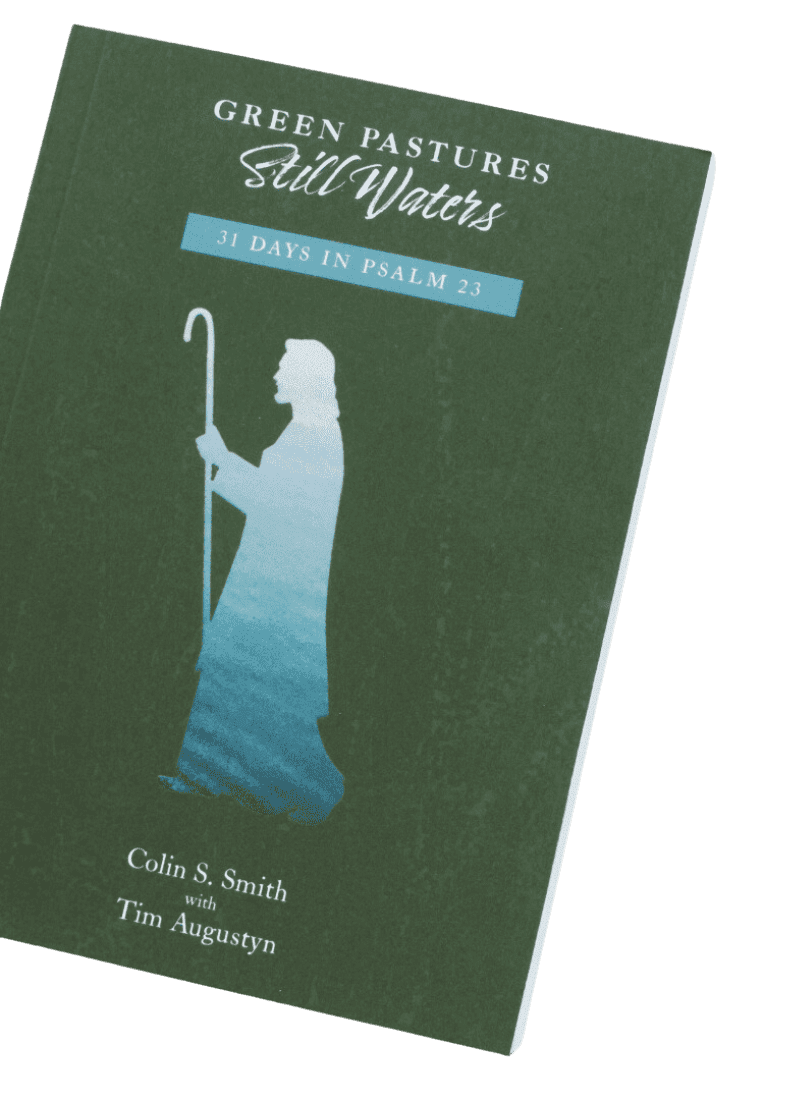
Spend 31 days in Psalm 23 with this new book from Pastor Colin Smith for your gift of any amount in April!
No thanks, I’m not interested!
- In the Presence of Jesus
- Devotional Course
- Contemplation
- Grief and Loss
- Recommended Books

Meeting God in a Moment of Time

In the Presence of Jesus Devotional Course

Appreciate Your True Worth and Value

Synonyms [ edit ]
- take care of the pennies and the pounds will take care of themselves
- many a mickle makes a muckle
- every little helps
- little and often fills the purse
Translations [ edit ]
- English terms calqued from Chinese
- English terms derived from Chinese
- English terms with audio links
- English lemmas
- English proverbs
- English multiword terms
- English terms with quotations
- English terms with non-redundant non-automated sortkeys
- English entries with language name categories using raw markup
- Arabic terms with non-redundant manual transliterations
- Cantonese terms with redundant transliterations
- Mandarin terms with non-redundant manual transliterations
- Hebrew terms with redundant script codes
- Hindi terms with redundant script codes
- Serbo-Croatian terms with redundant script codes
Navigation menu
- Epictetus Quotes
- Marcus Aurelius Quotes
- Seneca Quotes
- Zeno Quotes
“A Journey of a Thousand Miles Begins With a Single Step” - Meaning and History
Do you ever feel overwhelmed by the sheer distance between you and your goals? If so, the saying "a journey of a thousand miles begins with a single step" can help you realize that you can start where you are with what you have.
This ancient Chinese proverb is profound in its simple explanation of how we can achieve great things. Let's take a deeper dive into this quote's meaning, history, and more.
“A Journey of a Thousand Miles Begins With a Single Step” – The Meaning
“A journey of a thousand miles begins with a single step” is a Chinese proverb that originates from the Tao te Ching . The meaning of this saying is that even the most difficult and longest ventures have a specific starting point. Similarly, it implies that daunting tasks can typically be begun by doing something very simple.
“We all carry the seeds of greatness within us, but we need an image as a point of focus in order that they may sprout.” – Epictetus
This is a very useful proverb to use in your own life when you’re faced with a challenge or working towards a goal that feels impossible. The reality is that all great accomplishments and victories are comprised of many smaller, more simple steps.
It’s impressive how profound the messages are in this short maxim. From these eleven words, we can extract the following:
- There is a starting point for even the longest and most difficult tasks
- Overwhelming tasks can be started by doing something simple
- Larger goals and challenges can be broken down into small steps
- If we want to achieve something, we can start today
- Procrastination only delays the process of taking small steps toward great things
- We can decide to begin doing something great today
For example, let’s say that you wanted to own the most successful landscaping business in your city. This might seem like a lofty goal if you’ve never so much as mowed a lawn. However, you can create a plan for yourself that is made up of many small steps and milestones. With hard work, diligence, and focus, you’ll find that you make steady progress toward your goal over time.
This expression doesn’t just apply to tangible, concrete goals, though. You can also use it when working on your own personal growth.
“Assemble your life… action by action. And be satisfied if each one achieves its goal… No one can keep that from happening…Action by action.” — Marcus Aurelius
Let’s say, for instance, that you’ve noticed that you constantly overthink things to the extent that it’s holding you back. When something is a deeply entrenched habit, you aren’t going to be able to break it overnight.
However, you might start by working on building self-awareness, so you become more conscious of your overthinking habit. From there, you might use specific techniques to escape overthinking, make decisions more quickly, and start taking action. As time goes on, you’ll find that you’ve traveled very far from your initial starting point of overthinking every little thing.
The History of the Quote
“A journey of a thousand miles begins with a single step” is found in Chapter 64 of the Tao te Ching , which is one of the fundamental texts for both religious and philosophical Taoism along with the Zhuangzi .
The author of this ancient text is regarded traditionally as Laozi. However, there has been much debate throughout history about the identity of the person or people that wrote and compiled this text. The Tao te Ching is sometimes referred to as the Laozi , particularly in Chinese sources, as ancient Chinese books were often referenced by the name of the author.
Laozi is considered to be the founder of both religious and philosophical Taoism and is a central figure in Chinese culture. Many Chinese religious movements have been profoundly influenced by the work of Laozi.
The traditional accounts of Laozi’s life state that he was born in the 6th century BC in the state of Chu. He worked for the Zhou court at Wangcheng as the royal archivist and even, on one occasion, met and impressed Confucius. It is said that he wrote the Tao te Ching before going off into the western wilderness.
In Chinese folk religions, Laozi is regarded as a god or a saint. During the Tang dynasty, he was worshipped as an imperial ancestor. There is much that is unknown about Laozi despite the fact that he is tremendously historically important.
Many scholars have questioned whether there ever was a historical Laozi at all. Whether or not the man himself ever really lived, there is no denying the tremendous influence that the Tao te Ching has had since it was written more than two thousand years ago.
Though we may never know the precise biography of Laozi or the author(s) of the Tao te Ching , there's no question about the impact of the text and Taoism as a whole on Chinese culture and the world at large.
Similar to Stoicism in some ways, Taoism is a philosophy that helps people understand how they can exist in harmony with the universe. The Tao (sometimes spelled "Dao") is a difficult-to-define concept that is sometimes understood to mean "the way of the universe."
Another primary idea in Taoism is the idea that there are balancing forces in the universe, which are known as yin and yang. These matching pairs (such as action and inaction, light and dark, and hot and cold) work in tandem to create a universal whole. These concepts, in part, illustrate the fact that nothing exists in a vacuum and everything is connected.
Taoism existed alongside Buddhism and Confucianism for many centuries until a number of major religions were banned in 1949.
Different Translations
Laozi’s Tao Te Ching is the most translated book in the entire world after the Bible and the Bhagavad Gita. There have been more than one hundred different translations into English alone, not to mention dozens of translations into French, German, Dutch, Italian, Latin, and more.
Written in Classical Chinese, the Tao te Ching is a notably difficult text to comprehend and translate. The notable twentieth-century scholar on modern Chinese religions, Holmes Welch, noted that the written Classical Chinese lacked the following:
- Active or passive
- Singular or plural
There are also many grammatical particles missing in the text, which typically make it possible for comprehension and translation to be more precise. On top of that, many of the passages are deliberately ambiguous and vague.
To make things more complicated, there also aren’t any punctuation marks in Classical Chinese. As you might imagine, this makes it hard to determine with certainty the start and end of any given sentence.
Given all of these considerations, it’s worth looking at some of the different translations of this particular saying within its context in Chapter 64 of the Tao te Ching :
The giant pine tree grows from a tiny sprout. The journey of a thousand miles starts from beneath your feet. – Translated by Stephen Mitchell A tree you can barely get your arms around grows from a tiny shoot A nine-story tower begins as a heap of earth A thousand mile journey begins under your feet. – Translated by Michael LaFargue A tree as big as a man’s embrace springs from a tiny sprout. A tower nine stories high begins with a heap of earth. A journey of a thousand leagues starts where your feet stand. – Translated by Wu A tree broader than a man's embrace grows from a tiny seedling. The tallest tower starts from a clod of earth. The longest journey begins with the first step. – Translated by Han Hiong Tan By closing the door, the entry is not possible, A big tree was in its beginning a tiny offshoot, Thus a great expedition starts with a little step. – Translated by Sarbatoare A tree that fills the arms' embrace is born from a downy shoot; A terrace nine layers high starts from a basketful of earth; An ascent of a hundred strides begins beneath one's foot. – Translated by Victor H. Mair A tower of nine levels Starts from the dirt heap A journey of a thousand miles Begins beneath the feet – Translated by Derek Linn A massive tree grows from a little sprout. A nine-story building rises from a clod of earth. A thousand fathoms begin with a single step. – Translated by Edward Brennan and Tao Huang A tree that can fill the span of a man’s arms Grows from a downy tip; A terrace nine storey’s high Rises from hodfuls of earth; A journey of a thousand miles Starts from beneath one’s feet. – Translated by D.C. Lau A tree as a big as a man’s embrace grows from a tiny shoot. A tower of nine storeys begins with a heap of earth. The journey of a thousand li starts from where one stands. – Translated by Wing-tsit Chan A tree so big that it takes both arms to surround starts out as the tiniest shoot; A nine-story terrace rises up from a basket of dirt. A high place one hundred, one thousand feet high begins from under your feet. – Translated by Robert Henricks A tree with a full span’s girth begins from a tiny sprout; A nine-storied terrace begins with a clod of earth. A journey of a thousand li begins at one’s feet. – Translated by Yutang Lin The most massive tree grows from a sprout; The highest building rises from a pile of earth; A journey of a thousand miles begins with a step.
– Translated by Thomas Cleary
As you can see, some of these passages use the word li in describing the length of the journey. The li is a traditional Chinese unit of distance and is also known as the Chinese mile. Precisely how far a li is has varied quite a bit over time. Generally, though, it used to be about one-third of an English mile and is now standardized as a half-kilometer.
Stoicism and the Tao te Ching
There are a number of notable similarities between the Tao te Ching and the philosophy of Stoicism . These include the importance of virtue, the idea that fear is created in the mind and not by external events, and the reality that adversity helps you to grow .
“First say to yourself what you would be; and then do what you have to do.” – Epictetus
Let's dig into some of the major overlaps between these two schools of thought.
Understanding What’s In One’s Control
In the Tao te Ching , the author expresses that the wise person is able to look reality squarely in the eye without trying to exert control over it.
The Master sees things as they are, without trying to control them. She lets them go their own way, and resides at the center of the circle. – Laozi
Stoicism similarly posits that we must understand and accept the things that are outside of our control. Beyond that, we can even strive to embrace the way that things happen, even if it seems like the universe has turned against us. Through amor fati , we can see the bigger picture and recognize that all things that happen are, if not good, at least necessary.
Observe Yourself
When paging through the Tao te Ching , you'll likely notice the similarity that both Taoism and Stoicism ask you to watch yourself carefully.
“Knowing others is intelligence; knowing yourself is true wisdom. Mastering others is strength; mastering yourself is true power.” – Laozi
Both of these schools of thought ask us to focus on our own actions rather than attaching ourselves to specific outcomes. They ask us to overcome ourselves and conquer ourselves.
Doing What Is Best For the Hive
Both Stoicism and Taoism emphasize the importance of the collective good. At the same time, they approach achieving what is best for humanity through the improvement of each individual.
It's easy to look at the world and see that things could be better. It's easy to run around blaming just about everyone for the state of things. The truth is, though, that you can't change other people by telling them how they should be. All you can do is work to improve yourself, and perhaps then you'll find that other people are changing by the nature of your example.
Relationship With Nature
Both Stoicism and Taoism propose that being a virtuous person means acting in accordance with nature.
“Water gives life to the ten thousand things and does not strive. It flows in places men reject and so is like the Tao. In dwelling, be close to the land. In meditation, go deep in the heart. In dealing with others, be gentle and kind. In speech, be true. In ruling, be just. In business, be competent. In action, watch the timing. No fight: No blame.” – Laozi
Even though Taoism and Stoicism both advocate for a return to nature of sorts, this doesn't mean that they were calling for people to run off into the woods to live as hermits. They both share the idea that it's possible for living in accordance with nature to coexist with life in society.
Letting Go of What Others Think of You
If we're not careful, it's easy to let what other people think of us control who we are and what we do. Instead of being directed by the opinions of others, we can turn inward and try to access our inner resources and personal purposes.
“When you are content to be simply yourself and don't compare or compete, everyone will respect you.”
Both Taoism and Stoicism point toward the necessity of not being driven by a desire for reputation, fame, or approval. In the above quote from the Tao te Ching , Laozi reminds us of the odd truth that the way actually to gain people's respect is to be content as yourself without the need for the approval of others.
“Your days are numbered. Use them to throw open the windows of your soul to the sun. If you do not, the sun will soon set, and you with it.” – Marcus Aurelius
Powerful Quotes From the Tao Te Ching
Despite the fact that the Tao te Ching was written thousands of years ago, you'll find that the words of this text are surprisingly relevant to your own life. The timeless wisdom found in this book is something that you can return to over and over again in different seasons of your life.
For this reason, we included the Tao te Ching on our list of 21 books that will change the way you think . If you're ready to revolutionize your life with new ideas and knowledge, this list is a great jumping-off point.
“A man with outward courage dares to die; a man with inner courage dares to live.” – Laozi “Simplicity, patience, compassion. These three are your greatest treasures. Simple in actions and thoughts, you return to the source of being. Patient with both friends and enemies, you accord with the way things are. Compassionate toward yourself, you reconcile all beings in the world.” – Laozi “If you try to change it, you will ruin it. Try to hold it, and you will lose it.” – Laozi “To understand the limitation of things, desire them.” – Laozi “Those who know do not speak. Those who speak do not know.” – Laozi “The truth is not always beautiful, nor beautiful words the truth.” – Laozi “If you understand others you are smart. If you understand yourself you are illuminated. If you overcome others you are powerful. If you overcome yourself you have strength. If you know how to be satisfied you are rich. If you can act with vigor, you have a will. If you don't lose your objectives you can be long-lasting. If you die without loss, you are eternal.” “The flame that burns Twice as bright burns half as long.” – Laozi “A leader is best When people barely know he exists Of a good leader, who talks little, When his work is done, his aim fulfilled, They will say, “We did this ourselves.” – Laozi “The wise man is one who, knows, what he does not know.” – Laozi “If you realize that all things change, there is nothing you will try to hold on to. If you are not afraid of dying, there is nothing you cannot achieve.” – Laozi “The further one goes, the less one knows.” – Laozi “When there is no desire, all things are at peace.” – Laozi “Close your mouth, block off your senses, blunt your sharpness, untie your knots, soften your glare, settle your dust. This is the primal identity.” – Laozi “When people see some things as beautiful, other things become ugly. When people see some things as good, other things become bad.” – Laozi “Trying to understand is like straining through muddy water. Have the patience to wait! Be still and allow the mud to settle.” – Laozi “A good traveler has no fixed plans and is not intent upon arriving. A good artist lets his intuition lead him wherever it wants. A good scientist has freed himself of concepts and keeps his mind open to what is.” – Laozi “What is a good man but a bad man's teacher? What is a bad man but a good man's job? If you don't understand this, you will get lost, however intelligent you are. It is the great secret.” – Laozi “Success is as dangerous as failure. Hope is as hollow as fear.” – Laozi “True words aren't eloquent; eloquent words aren't true. Wise men don't need to prove their point; men who need to prove their point aren't wise.” – Laozi “The Master has no possessions. The more he does for others, the happier he is. The more he gives to others, the wealthier he is.” – Laozi “My teachings are older than the world. How can you grasp their meaning? If you want to know me, Look inside your heart.” – Laozi “Fill your bowl to the brim and it will spill. Keep sharpening your knife and it will blunt.” “He who stands on tiptoe doesn't stand firm. He who rushes ahead doesn't go far. He who tries to shine dims his own light. He who defines himself can't know who he really is. He who has power over others can't empower himself. He who clings to his work will create nothing that endures. If you want to accord with the Tao, just do your job, then let go.” – Laozi “To bear and not to own; to act and not lay claim; to do the work and let it go: for just letting it go is what makes it stay.” – Laozi “Not-knowing is true knowledge. Presuming to know is a disease. First realize that you are sick; then you can move toward health.” – Laozi “A great nation is like a great man: When he makes a mistake, he realizes it. Having realized it, he admits it. Having admitted it, he corrects it. He considers those who point out his faults as his most benevolent teachers. He thinks of his enemy as the shadow that he himself casts.” – Laozi “Failure is an opportunity. If you blame someone else, there is no end to the blame. Therefore the Master fulfills her own obligations and corrects her own mistakes. She does what she needs to do and demands nothing of others.” – Laozi “If good happens, good; if bad happens, good. ” – Laozi “The heart that gives, gathers.” – Laozi “The road you can talk about is not the road you can walk on.” – Laozi “True perfection seems imperfect, yet it is perfectly itself. True fullness seems empty, yet it is fully present. True straightness seems crooked. True wisdom seems foolish. True art seems artless.” – Laozi “Nothing in the world is as soft and yielding as water. Yet for dissolving the hard and inflexible, nothing can surpass it. – Laozi The soft overcomes the hard; the gentle overcomes the rigid. Everyone knows that is true, but few can put it into practice.” – Laozi
Quotes With a Similar Message
While "a journey of a thousand miles begins with a single step" is a succinct and powerful way to describe the fact that even large undertakings start with small tasks, many other thinkers throughout history have discussed the same phenomenon.
“Now is the time to get serious about living your ideals... How long can you afford to put off who you really want to be? Your nobler self cannot wait any longer.” – Epictetus
Let's look at a few other quotes from people about starting where you are and working toward your goals.
“It’s not that we have little time, but more that we waste a good deal of it.” – Seneca the Younger “Putting things off is the biggest waste of life: it snatches away each day as it comes, and denies us the present by promising the future. The greatest obstacle to living is expectancy, which hangs upon tomorrow and loses today. You are arranging what lies in Fortune’s control, and abandoning what lies in yours. What are you looking at? To what goal are you straining? The whole future lies in uncertainty: live immediately. ” – Seneca the Younger “Great things are not done by impulse, but by a series of small things brought together.” – Vincent Van Gogh “Don't wait. The time will never be just right.” – Napoleon Hill “It is better to take many small steps in the right direction than to make a great leap forward only to stumble backward.” – Old Chinese Proverb “In any moment of decision, the best thing you can do is the right thing, the next best thing is the wrong thing, and the worst thing you can do is nothing.” – Theodore Roosevelt “Be not afraid of growing slowly, be afraid only of standing still.” – Chinese Proverb “You don't have to see the whole staircase, just take the first step.” – Martin Luther King, Jr. “Don’t judge each day by the harvest you reap, but by the seeds you plant.” – Robert Louis Stevenson “The man who removes a mountain begins by carrying away small stones.” – Chinese Proverb “The secret of getting ahead is getting started. The secret of getting started is breaking your complex, overwhelming tasks into small, manageable tasks, and then starting on the first one.” – Mark Twain “Success is the sum of small efforts, repeated day in and day out.” – Robert Collier “The way to get started is to quit talking and begin doing.” – Walt Disney "All big things come from small beginnings.The seed of every habit is a single, tiny decision. But as that decision is repeated, a habit sprouts and grows stronger. Roots entrench themselves and branches grow. The task of breaking a bad habit is like uprooting a powerful oak within us. And the task of building a good habit is like cultivating a delicate flower one day at a time.” – James Clear "Do what you can, with what you've got, where you are." – Squire Bill Widener
Final Thoughts on 'A Journey of a Thousand Miles Begins With a Single Step'
This quote from the Tao te Ching is something that you can return to over and over again.
If you are struggling to find the motivation to work toward a goal, you can remind yourself that even the longest journeys consist of small steps and begin where a person is standing.
If you feel like the obstacles in front of you are too much for you to overcome, you can find some solace in the reality that all giant projects can be broken down into smaller, manageable tasks.
You can apply this proverb to your professional life and to your personal life. It is just as useful when you want to write a novel as it is when you want to quit drinking. You'll find it just as powerful when you want to climb a literal mountain as when you want to actively work to overcome anxiety and depression .
It's important to remember that, in life, good things take time. Becoming the person you want to be isn't going to happen every night. Work on making progress every day , and you'll be surprised where you find yourself in just a few months' time.
Are you searching for more insight and inspiration to help you live a better life? Make sure you check out our Stoic Quotes blog.
We encourage you to share this article on Twitter and Facebook . Just click those two links - you'll see why.
It's important to share the news to spread the truth. Most people won't.
Leave a Reply Cancel reply
Your email address will not be published. Required fields are marked *
Save my name, email, and website in this browser for the next time I comment.
Related Articles
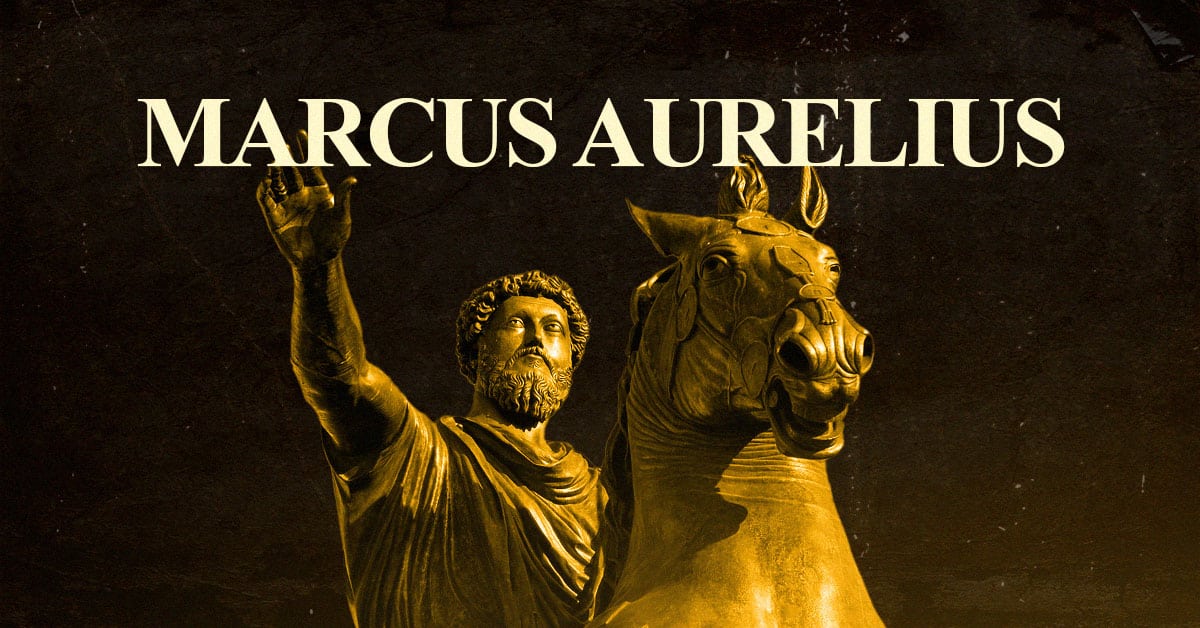
Marcus Aurelius Quotes: 19+ Best Quotes from the Stoic Emperor
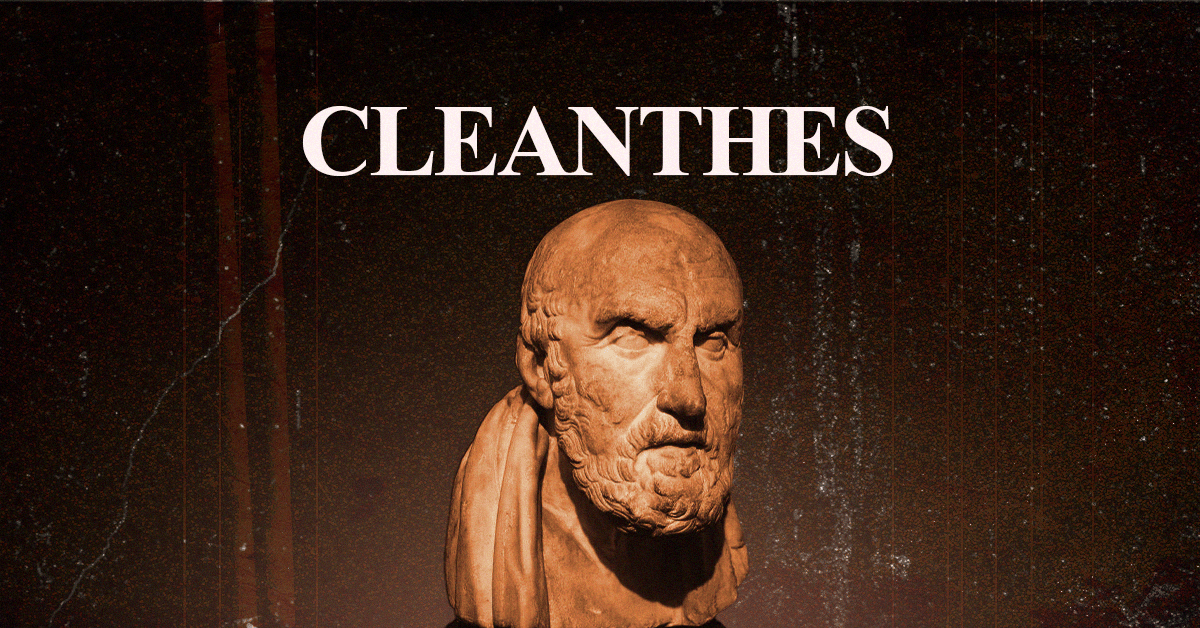
Cleanthes Quotes: The Best Quotes from the Stoic Philosopher
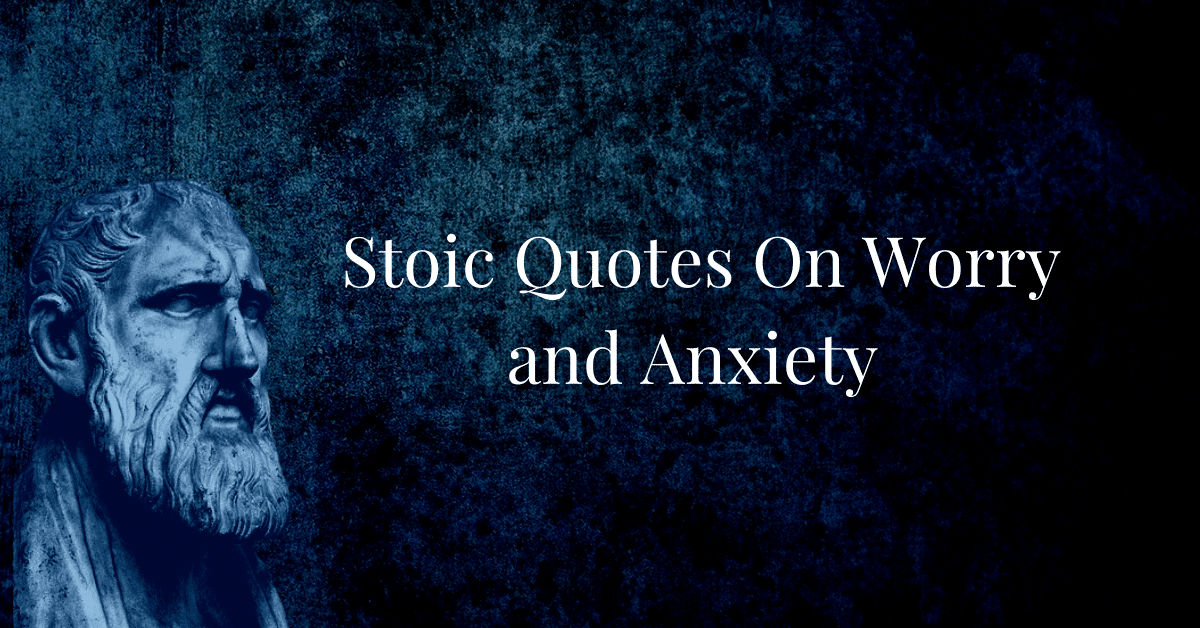
45 Stoic Quotes on Anxiety and Worry
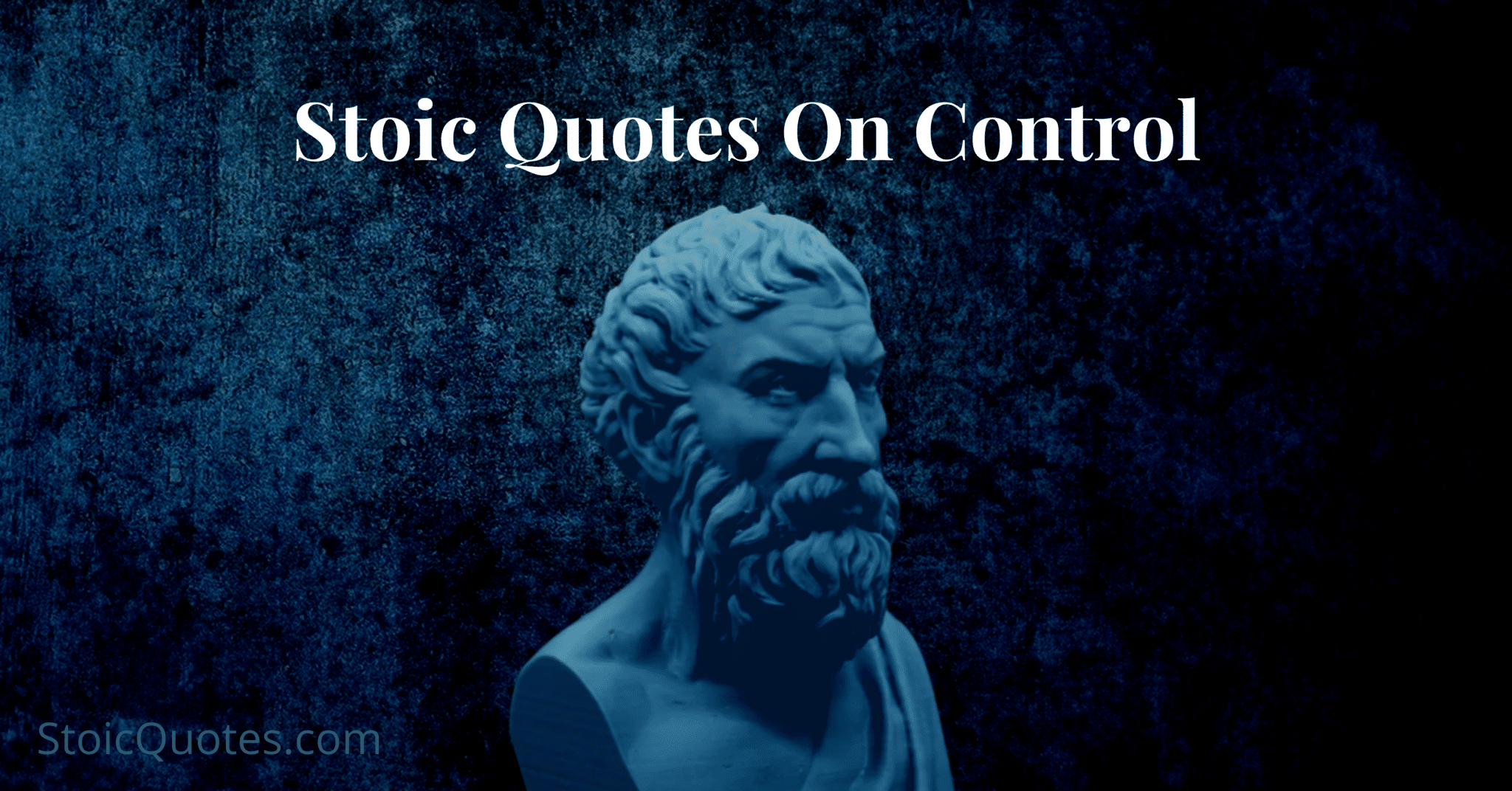
45 Stoic Quotes on Control
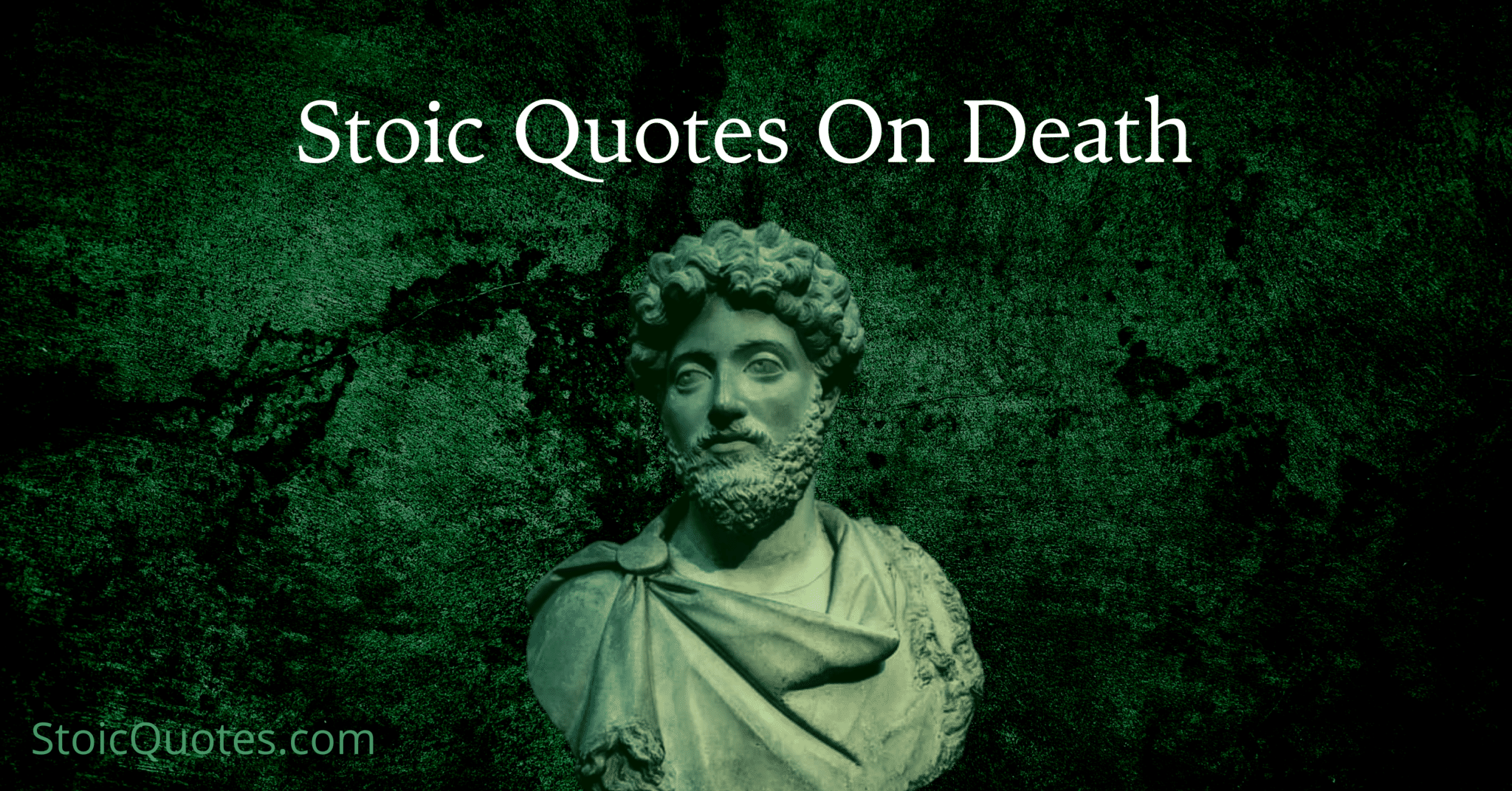
63 Stoic Quotes on Death
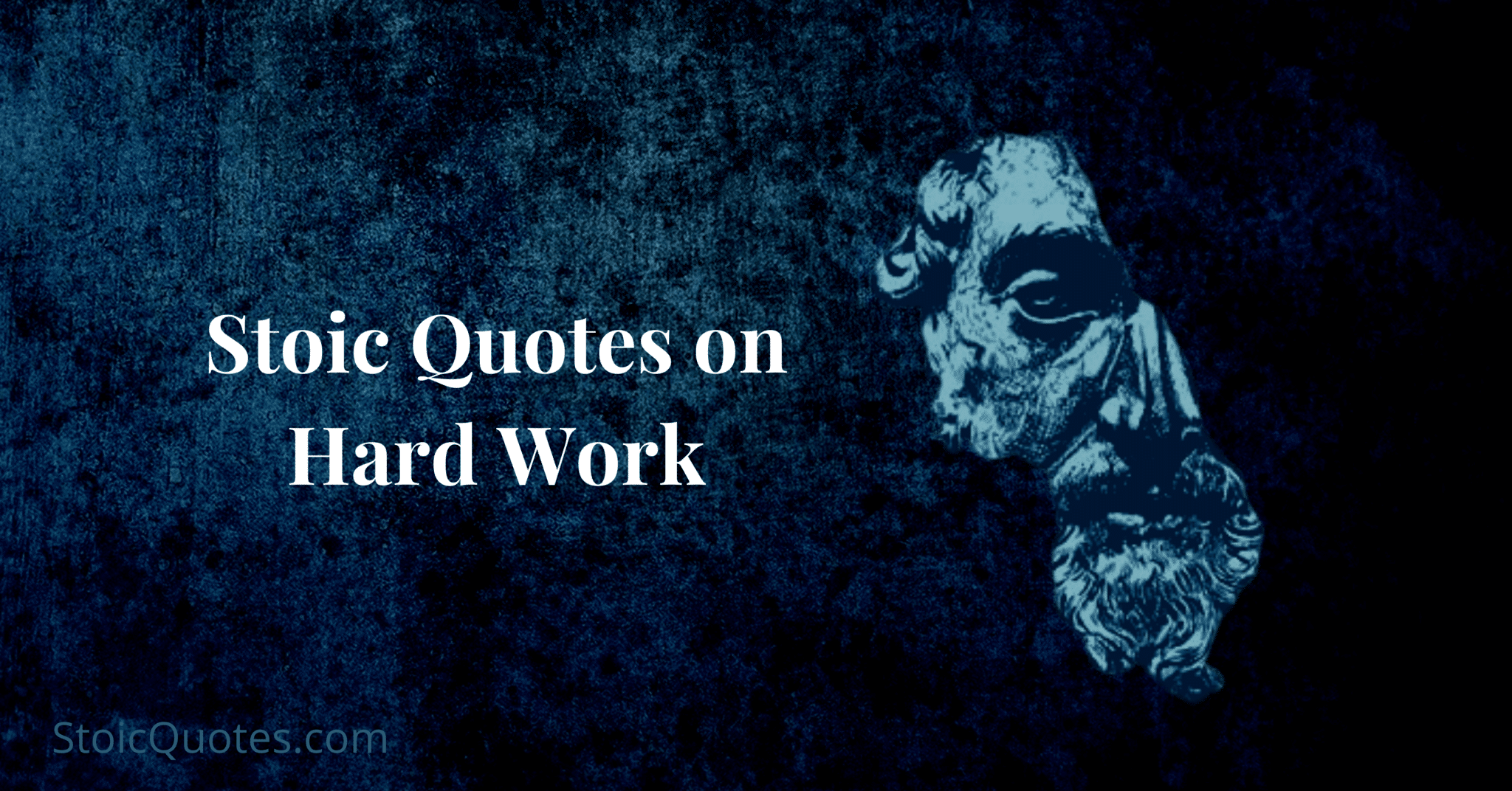
53 Stoic Quotes on Hard Work

61 Stoic Quotes on Change
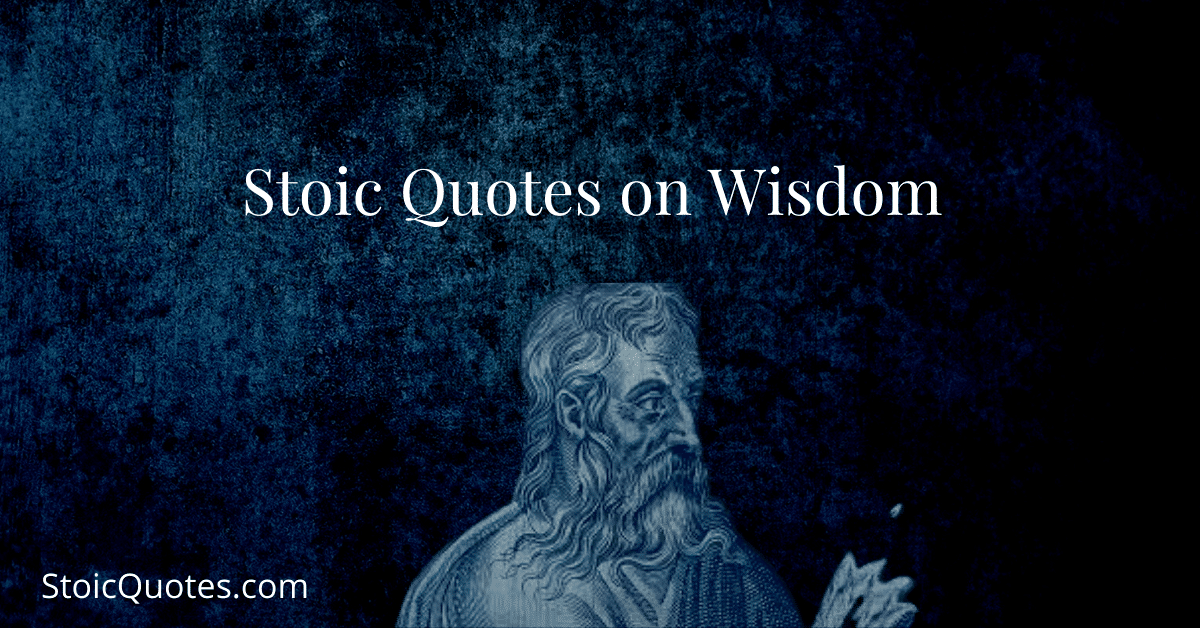
50 Stoic Quotes on Wisdom

60 Stoic Quotes on Hardship
- +1-805-242-3180
- [email protected]
- What’s Happening!
- CONTRIBUTE to a HIGHER VISION
- What We Believe
- Themes, Topics & Books

The journey from head to heart
Sharing is caring!
It is said that the longest journey you will ever make is from your head to your heart. We are always thinking, judging, or perceiving everything in our lives in a particular way. There is a safe feeling in living in thought, it’s what you know, but there comes a time when you must realize you are not living and experiencing life to its fullest; instead you are experiencing your thoughts about life.
One way to get off the bench and back into the game of life is to take the journey from your head to your heart. Become aware of the stories and meaning you add, either consciously or unconsciously, to everything in your life. Allow yourself to be fully present without judgment. As thoughts arise, allow them to drift by like clouds in the sky without grasping any of them.
As you take this step backward, you become the observer or the witness. You merge with Spirit and without being consumed by thoughts and thinking, you drop into your heart space. Heart space energy is love energy, and as you allow your attention to move from intensely focused thoughts and thinking, it will land in the heart space. As you continue to place your attention on the heart space, the love energy will continue to flow and grow. Bask in it, let the love wash over you and feel the presence of the Divine right where you are.
You will be compelled to treat all of life with loving-kindness. Negative thoughts become fewer and farther between and are replaced by positive, uplifting, and inspiring thoughts which place you in harmony with your highest self. As you lead an inspired life, you are in alignment with your heart space. Affectionate awareness becomes the new foundation of your perception. Everything is now perceived as a sweet and loving expression of the mystical nature of life. You see with the eyes of love, the eyes of Spirit.
Moving through the kingdoms of consciousness, you have learned that you are not a victim and move into the next stage of consciousness where you discover that you have the power to manifest your deepest desires. Then you reach a point where you recognize there’s got to be something more than this manifesting business and you desire to go deeper. You deepen your connection with your Source and understand that you are a channel of Spirit and it has something to say, be and do through you, and you allow it to be done. Moving into the fourth stage of consciousness, you have now merged with your Source and know that it is the Divine in you doing the work, and you allow it to do and be what it will, as you.
The movement between the different stages of consciousness is fluid, as is the journey from head to heart. Notice, release, let the love wash over you, repeat.
And so it is.
Rev. Elizabeth Rowley
Leave a reply, recent posts.
- Sparking Imagination
- Grow with God
- Back on track
- Free Your Mind
- A message from the Rev!
- Take a Single Step Today
- Flip The Switch
- What’s In A Name?
- A Change of Paradigm
- Stepping Out, Stepping Up
- The Winds of Change
- What is Being Born in You?
- Rev. Elizabeth Messages
- Weekly Column – Paso Robles Press
Other Websites
Copyright @ 2021 - Central Coast Center for Spiritual Living. Designed by Rev. Elizabeth Rowley
The Longest Journey Is from the Head to the Heart
As I’ve written in prior blogs, most of us have been programmed since childhood to live out of fear. We’ve also been programmed to live in our heads–meaning thinking with our brains. For me, the most important journey a human being makes in their lifetime is only about a foot long: it’s the journey from our head to our heart. This is because the heart is where love lives. It’s where you naturally lived when you were a small child, before the fear set in. In that place, we feel like everything is possible, and you cannot fail. And these are the feelings that allow for us to manifest anything in we want in our lives.
So how do we all get so off track? In my mind, I see us as all growing up in this confusing and frightening world. Due to that, most people slowly shift into our heads because we’re frightened and confused. Frightened because of what we’re being told by adults and shown on television–that the world is not a safe place. And so we come up with the idea that our heads are the safest places to be. This idea keeps us living in our heads, in order to remain safe and apart from a difficult, dangerous and unkind world. But doing this just makes us suffer more, as we continue to use our heads to try and think our way out of the uncomfortable places we find ourselves in.
What could we do different? We could tap into the desires of our hearts and allow those desires to guide us instead. We could make that foot-long journey back to living through the feelings of our hearts. The heart brings us back into balance, creating congruency in our lives. Once we’re grounded there, we can use the brain the way it was meant to be used: as a fabulous computer to formulate plans, create strategies, and gather resources to manifest the desires of our hearts.
The process of getting back to the place of feeling rather than thinking is not some major project you need to undertake in your life. It’s not about perfection or meeting some externally imposed moral standard. It’s simply is a self-directed process that can occur throughout your life as you fine-tune your power to design your own reality. What I teach is not a one-way delivery system for your desires, like a letter to Santa Claus that you send up the chimney, and then wait for the morning delivery. I believe it’s a co-creative process in which you work with the Universe. Moving from your head to your heart one of the ways that you can fulfill your part of this lifetime of collaboration. If you’re reading this blog, you’re likely at the beginning of your journey. So for now, see if you can focus on three areas:
1. Shifting from the head to the heart 2. Taking care of the body 3. Nourishing the spirit
Just reading these words mean you are already on your way to the life of your dreams!

Free Course: Transform Your Life
Recommended blogs.

Did You Know Your Brain Is Actually a Living Radio Transmitter?
A lot is known about the amazing lump of grey matter inside your skull: your brain. While there is still more to understand about this

Meet Grandmother and School Teacher Beatriz Cortez
Beatriz Cortez is a 64 year old school teacher who works for the Alameda Unified School District. Diagnosed with Invasive Ductal Carcinoma in late April 2015,

Understanding the difference between manifesting and intentions: A path to manifestation success
Welcome to a transformative journey of unlocking the secrets to manifesting the life of your dreams. In this blog post, we will delve into the
Let's Keep in Touch
Mikemurphyunfiltered.

Connect With Mike

© 2023 Mike Murphy. All rights reserved.

- Feature Stories
- Saints Next Door
- International Days
- Commentaries
- Daily Reflection
- Sunday Homily
- Pope's Prayer Intentions
- Homily of the Day
- Voice of Asian Bishops
- Kachin Jinghpaw
- Kachin Lisu
- Kachin Rawang

The longest journey in life: from head to heart; from untruth to truth

Homily of Cardinal Charles Maung Bo of Yangon for Sunday, August 29, 2021
First Reading : Deut. 4:1-2,6-8 “There is no people as wise and as intelligent as this great nation” And is there a nation as great as ours…”
Second Reading : James 1: 17-18, 21b – 22, 27 Be doers of the Word and not just hearers .
Gospel : Mark 7:1-8, 14-15,21-23 The one that matters most is the transformation of the heart.
Dear Brothers and Sisters,
In the name of the living, loving and liberating name of Jesus, all greetings. We utter the name of Jesus every second, to protect us from all great challenges, to be grateful for the providence so far. We continue to pray that Jesus may be the healer for our people.
Dark clouds of the pandemic has been slightly merciful as the case load decreases. This nation needs the protective hand of God. But the other pandemics continue, spread by selfish virus of selfish people. Let us not lower our guards, not lessen our implorations for Divine intervention.
Today’s readings take us to a deeper reflection at a personal, family and national levels:
- Are we moved by the heart or by the mind? The journey between head and heart.
- Do our words become flesh through real actions?
- Can laws and canons replace the greatest commandment: Love
The readings speak of human struggle for authenticity amidst the spiraling wave of duplicity.
The context of our reflection is clear: Challenges continue in our lives. 18 months of COVID, loss of lives, loss of livelihood. 7 months of civil strife, disappointment, deaths and despair. The litany of natural and man-made disasters frustratingly extend a long night of silent tears to my dear people.
Amidst these darkness, today’s readings light a candle of hope.
How consoling to read from the First reading of today, these embalming words from the book of Deuteronomy as if they are addressed directly to the people of Myanmar:
There is no people as wise and as intelligent as this great nation” And is there a nation as great as ours …”
Yes. Undoubtedly Myanmar is a golden land. Not because of its great resources. But because of its great human resources. Their wealth is our people’s culture, spirituality and their great qualities. Myanmar people are wise and intelligent, as the Book of Deuteronomy says. They know it is the not the jade wealth, not the stolen wealth that makes them to sleep at peace at night; armed with personal morality and generosity, our people can be at peace with themselves. That is their wisdom.
No amount of oppression and suffering could rob our people of their smile, their grace, their grit and their generosity. That is intelligence, that is wisdom: the ability to smile amidst all tears. The Bible records the Pharaohs of history have no record of smile. A life without tears and smiles robs of all humanity. Here our people know the essentials. Deuteronomy is right: our people have the wisdom and intelligence.
The next two readings guide us towards the future: Our journey is towards greater authenticity in personal life and life of the nation. That journey needs to be taken. Every human being is called upon to take the journey from head to heart. The problem we face in Myanmar today is between the head and the heart. Laws vs the Love among the people. This is the conflict in life: ideas, laws, regulations and concepts in the head. Head as the metaphor of ideas and laws. The deaths and despair of the last seven months are based on the laws and regulations of the head. It is pitted against the people’s heart as the metaphor of Love.
This is the conflict Jesus faces in the Gospel today.
The pharisees as the “guardians” of the mosaic law contested the disciples for not following it. The Old Testament has many laws: The most well-known of these laws are the Ten Commandments, but the Torah contains a total of 613 commandments or mitzvah covering many aspects of daily life, including family, personal hygiene and diet. All of us affirm these laws are holy and meant to build the people of Israel as the chosen race.
But later some abused these laws. The spirit of the law was lost but the letter stayed. For example, in today’s Gospel, the pharisees are contesting the disciples for eating without washing the hand. No worry about the hunger of the disciple, or their lack of access to regular food!
Jesus enters into the argument: What is essential in human life? The laws? Or Love? The head or the heart? Jesus is not against the Law. He speaks of his coming to “fulfil the law” (“Do not think that I have come to abolish Law or the Prophets; I have not come to abolish them but to fulfil them.” Mt 5:17) He even acknowledges elsewhere the Pharisees are good in the law and even righteous.
But he is candid clear: For I tell you, unless your righteousness exceeds that of the scribes and Pharisees, you will never enter the kingdom of heaven. Go beyond the law into love: move from the legalistic, law-oriented mind towards love oriented heart. Mind is the workshop of lots of Good. But in the Gospel today, Jesus points out, defilement comes directly from the mind, more harmful than the unwashed hands.
According to him the following evils come from the mind:
- evil thoughts
- licentiousness
All these things come from within and they defile.
St Paul provides the antidote to these: love that comes from the heart has so many great gifts.
- love is kind
- love is patient
- love does not envy
- does not boast
- Does not dishonor others
- not self-seeking
- not easily angered
- keeps no record of wrongdoings
- does not delight in evil but rejoices in truth
- always trusts
- always hopes
- always preserves
Now the three remain; Faith, hope and Love. But greatest of these is love.
The pharisees followed the law and commandments as the way to honor Yahweh; Jesus recast them as the “radical demand – not command – of love.” From head to heart and both. “You shall love the Lord your God with all your heart and with all your soul and with all your mind” (Matt 22:37). For our Savior, loving God includes using our intellects to the best of our ability for his glory. Achieving what we think with what we do, what we say and what we practice in life is to bring harmony with head and heart.
That is a lifelong challenge.
The journey from head, full of concepts, laws, ideas into the heart that is full of love. They say the distance between the head and the heart is only 18 inches. But the journey between them takes the whole life. Authenticity is achieved when there is harmony between the head and the heart. A journey from the Pharisees to the disciples of Jesus. From oppressive governments to the Kingdom of God. It is a life time journey.
This long march to authenticity is achieved only when we learn to move from untruth to truth. Jesus who said we must love our enemies and pray for those who persecute us and also said we must forgive seventy times seven is merciless in his attack of Pharisees. Why?
In Matthew 23:13-36 we find some of the fieriest words ever spoken by Jesus what is called “The Seven Woes.” The seven woes are judgements against the so-called leaders of the time who failed in their leadership roles and responsibilities. Seven times he curses them with strong words:
He said seven times: Woe to you, teachers of Law, Pharisees and hypocrites. He called them: Whitewashed sepulchres. He called them: You snakes! You brood of vipers
Jesus seemed not to be patient even one time. Reason: Hypocrisy . Living with a Lie. Jesus does not like people who live a double life, a life of lie. A deceitful unauthentic life. He foresees their end: How will you escape being condemned to hell?
In the second reading, James warns us: Having ideas and reading the Word is commendable. But more commendable is to be “doers” of the word. No dichotomy between head and heart.
The Bible is full of warnings about living a double life, and we’re told over and over again that we must practice what we preach. If people are to see Jesus in us, (Galatians 2:20,) and our lives are to reflect His glory, (2 Corinthians 3:16-18,) and our lives are to display the fruit of the Spirit, (Galatians 5:22-23,) then we have to come to the conclusion that there is absolutely no room for a hypocrite in the Lord’s church, in the family, in personal life. And in those who govern us.
After so many months of suffering, each one of us need to rebuild ourselves. Bringing the compassionate heart into our lives. The disjointed head and heart disposition of those who rule us brought great agony.
We cannot allow that dichotomy to percolate into our lives. In our families, let us bring concern for one another. “Love one another as I loved you” that is the way we heal ourselves; we rebuild ourselves. Let us arm ourselves with love. As weapons are brought from all over the world, let us arm ourselves with love for one another. True authenticity, as Jesus castigated the Pharisees, comes ultimately through love.
Dear brothers and sisters, we faced so many challenges. Our healing, rehabilitation and reconstruction of our life needs to start from inside, as Jesus points out. Our memory needs to be healed; our heart needs to be healed. All the anxieties and anger needs to be healed.
We pray for this inner healing today. That inner healing starts with our ability to move from the head, the mind, that seeks only vengeance towards the heart that forgives and learn to love. May we have the courage to move from untruth, self-deception towards truth and self-care.
May the Lord, the living Word, enter our heart and mind, so that we may live an authentic life, working towards a Myanmar where heart plays a major role in rebuilding all of us as the Deuteronomy praises us :
” There is no people as wise and as intelligent as this great nation” And is there a nation as great as ours.” Deut. 4:1-2,6-8
Radio Veritas Asia (RVA) , a media platform of the Catholic Church, aims to share Christ. RVA started in 1969 as a continental Catholic radio station to serve Asian countries in their respective local language, thus earning the tag “the Voice of Asian Christianity.” Responding to the emerging context, RVA embraced media platforms to connect with the global Asian audience via its 21 language websites and various social media platforms.
Latest News

Philippines: OPMusik set to release "Muli," the debut single of Fratres!


Philippine Interfaith Movement Against Human Trafficking holds strategic planning meeting

Christian Study Centre holds a workshop on peace and interfaith harmony in Pakistan

Asian Lay Leaders Forum holds program to work for poor
Sign up for our newsletters.
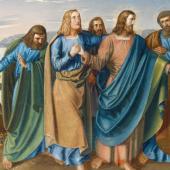
Our God breaks all human-made barriers in His time!
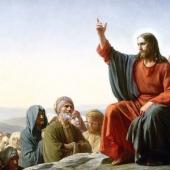
Leaders have a social and religious responsibility!

Life Changes in a Second
More commentaries.
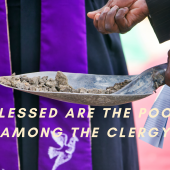
Blessed are the poor (among the clergy)
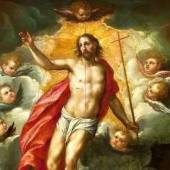
Celebrating our risen king at Easter!
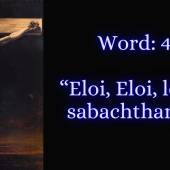
The SEVEN LastWords of Jesus. Word:4 - “Eloi, Eloi, lema sabachthani?”

The Longest Journey

- Share Share on Facebook
- Tweet Tweet on Twitter
- Pin it Pin on Pinterest
Leave a comment
Please note, comments must be approved before they are published
- choosing a selection results in a full page refresh
- press the space key then arrow keys to make a selection

Older Adults and Matters of Substance
Our guest editors
Substance Use and Abuse Among Older Adults: Reality and Treatment Options
Substance Use Is a Critical Health and Mental Health Issue for Older Adults By Madeline A. Naegle and Benjamin H. Han
Training Future Leaders to Address Mental Health and Substance Use Issues in Older Adults—The Health and Aging Policy Fellows Program By Harold Alan Pincus, Kathleen M. Pike, and Brigitta Spaeth-Rublee
Substance Use Disorders in Older Adults: Overview and Future Directions By Carlos Blanco and Isabella Lennon
Substance Use: Implications for Health and Well-being
Something to Talk About: Reducing Risk in Alcohol Consumption Using Education and Conversation By Deborah S. Finnell
Treating Substance Misuse in Older Adults Participating in PACE By Pamela Z. Cacchione
Can Innovative Technologies Improve Behavioral Health Care for Older Adults? By Alexis Kuerbis and Silke Behrendt
Why Older Adults Should Quit Tobacco and How They Can By Lisa U. Nguyen and Timothy C. Chen
Spotlight: Smokeless Tobacco Use in Older South and Southeast Asian Americans By Benjamin H. Han
Ethical Dilemmas in Counseling Older Adults on Cannabis Use: Less Science, More Quandaries By Arthur Robin Williams
Help for Primary Care Practitioners in Addressing Older Adult Alcohol and Opioid Use By Sebastian T. Tong, Elisabeth U. Kato, Mary P. Nix, and Arlene S. Bierman
Spotlight: Caring for Aging Veterans with Alcohol Use Disorder and Multiple Morbidities By Aaron P. Greenstein, Haley V. Solomon, and Margo C. Funk
Tailoring Treatment and Recovery Programs to Older Adults
SBIRT-Plus: Adding Population Health Innovations to Enhance Alcohol Screening and Brief Intervention Effectiveness By Thomas Babor
Barriers Facing Older Adults with Substance Use Disorders in Post–Acute Care Settings By Rossana Lau-Ng, Hollis Day, and Daniel P. Alford
What Can a Recovery Model for Alaska Natives Teach Us about Substance Use and Older Adults? By Jordan P. Lewis
Prevalence and Correlates of Methamphetamine Use Among Men Who Have Sex with Men in San Francisco By Glenn-Milo Santos, Desmond Miller, Jennifer Jain, Akua Gyamerah, Erin Wilson, Willi McFarland, and Henry F. Raymond
How Health Centers Engage Elders with Substance Use Disorder in Treatment By Margaret Flinter
Spotlight: Caring for Older Adults Post Incarceration By Benjamin H. Han
Inside Summer 2021 Generations Journal
Precarious aging and late-life poverty.
An Opportune Moment for Socially Just Economic Strategies to Prevent Precarity Our Guest Editors
Precarity in Later life: Understanding Risk, Vulnerability, and Resilience By Judith G. Gonyea and Amanda Grienier
Precarity and Economic Equality
Precarious Aging: The Spatial Context of Racial and Ethnic Disparities in Economic Security By Jan E. Mutchler, Yang Li, and Nidya Velasco Roldán
The Importance of Social Security as an Equalizer By Wenliang Hou and Geoffrey T. Sanzenbacher
The Diversity of Older Immigrants and Precarious Aging: Eligibility and Access to Public Benefits By Trinh Phan and Gelila Selassie
Precarity and Health Equity
A Tricky Balance: Medicare’s Affordability and Middle- and Lower-Income Beneficiaries’ Financial Stress By Amber Willink
The Crucial Role of Federal Nutrition Programs in Promoting Health Among Low-Income Older Adults By Robert Blancato and Meredith Whitmire
Precarity on a Global Scale
Climate, Disasters, and Extreme Weather Events: Vulnerability, Resources, and Interventions for Lower-Income Older Adults By Alexis A. Merdjanoff
The COVID-19 Pandemic and Precarious Aging: The Importance of an Equity By Marc A. Garcia, Adriana M. Reyes, and Catherine Garcia
Precarity in Relation to Place
Addressing Health Equity for Older Adults at the Neighborhood Level By Stephanie Robert and Meghan Jenkins Morales
Mitigating Homelessness Among Older Adults: Opportunities in Adapting the Permanent Supportive Housing Model By Sonia Gupta Pandit and Rebecca T. Brown
Affordable Senior Housing Maintenance and Renovations, COVID-19, and the Precarity of Residents’ Health Safety By Tam E. Perry, Zach Kilgore, Michael Appel, Michele Watkins, Claudia Sanford, and Dennis Archambault
Suggested citation for articles in this issue: [Last Name(s), First Name(s)]. "Article Title." Generations Journal, 45, no. 2 (Summer 2021). [URL]
In Praise of Adventure: Changing the Narrative of Later Life
By William L. Randall
For many of us, aging is viewed and experienced in essentially tragic terms: as a narrative of decline, a downward trajectory to decrepitude and death. Such a way of “storying” later life can set us up for (among other things) narrative foreclosure, which can feed the depression to which we are susceptible in the face of aging’s many challenges. This article presents an alternative and more positive narrative of later life. Drawing on ideas from narrative gerontology, it outlines how aging can be “re-genre-ated” from tragedy to adventure in at least four main directions: Outward, Inward, Backward, and Forward.
adventure, biographical aging, conscious aging, narrative gerontology, spiritualty
A 2010 New York Times article, “Seeing Aging as a Never-Ending Adventure,” tells of Englishman Tom Lackey “wing-walking” in his 80s as a way of getting past the sadness of losing his wife. “[H]e strapped his feet to the top of a single-engine biplane … and flew across the English Channel at 160 mph.” As if this weren’t enough, his plan was to prepare for his 90th birthday by being the first of any age to wing-walk it in both directions. Noted Lackey of these exploits, numbering at least 20, “My family thinks I’m mad,” to which he added, “I probably am” (Johnson, 2010).
Aging as adventure … Though it seems a contradiction in terms and though Lackey’s version of adventure is, literally, over the top, this is the metaphor to which—as a recent retiree—I find myself drawn. And it’s one I invite anyone, old or young, to entertain.
I've long been interested in the “metaphors we live by” (Lakoff & Johnson, 1980), one in particular: life as story . Beginning with my book, The Stories We Are (Randall, 1995/2014), this interest has had me pulling on insights from narrative psychology, literary studies, and other disciplines to articulate a narrative perspective on later life, or a narrative gerontology. According to this perspective, our lives as we experience them subjectively are stories , forever unfolding, often shifting course, continually thickening with meaning. They are flesh-and-blood novels that we compose and re-compose in memory and imagination as author, narrator, protagonist, and reader, more or less at once.
Inspired by such a perspective, I’ve spent my career pondering the poetics of aging (Randall & McKim, 2008), namely how such familiar elements of stories as plot, character, genre, and theme can illuminate the internal dynamics of development in later life, its biographical dynamics. Besides representing a unique starting point for approaching vast topics like wisdom and spirituality, this way of thinking opens a space for seeing aging as a process of not just getting old but actively, consciously growing old.
Regarding the element of genre, stories come, of course, in different types. For Christopher Booker (2004) in The Seven Basic Plots , they include not just tragedy and comedy, but such archetypal storylines as Rags to Riches, Voyage and Return, Overcoming the Monster, and The Quest.
This way of thinking opens a space for seeing aging as a process of not just getting old but actively, consciously growing old.
Given these options, we are at liberty to alter how we “story” later life, and not stay stuck in the tragic trajectory by which aging is often perceived and which can lead to “narrative foreclosure” (Bohlmeijer et al., 2011). By this I mean the conviction that, though our life continues, our story has effectively ended; no new chapters are apt to be written.
Such a conviction is a recipe for depression, which is treated as a medical matter, when what is needed is not another pill so much as a better story: a counter-story to the portrayal of aging as a problem to be solved, a fate to be fought, a downward drift to decrepitude and death. We need to “re-genre-ate” how we talk about aging, to shift from a rhetoric of decline to one of discovery, of quest, of adventure .
Aging as Adventure
One ally in the mission to change the narrative of later life is Florida Scott-Maxwell (1968). In The Measure of My Days , written in her 80s, she made several soulful observations. “When you truly possess all you have been and done,” she said, “you are fierce with reality” (p. 42).
“I want to tell people approaching and perhaps fearing age,” she wrote, “that it is a time of discovery. If they say, ‘Of what?’, I can only answer, we must each find out for ourselves, otherwise it won’t be discovery” (p. 142).
She spoke, too, of how she and others her age “seem to lead the way into the unknown;” of how “all is uncharted and uncertain” (p. 139). Unknown, uncharted, uncertain—this is all adventure-talk, and we have the option to adopt such talk as we journey into later life.
I'm hardly the first to combine “aging” with “adventure.” Betty Friedan (1993) devoted a whole chapter to that combination in her book, The Fountain of Age . Certainly, a burgeoning business of gero-tourism is enticing people ages 50 and older with sufficient means to take up everything from skydiving off cliffs to hiking in the Himalayas, escapades looked to as examples of “positive aging,” “successful aging,” or other up-beat mantras that have their merits, to be sure. I'm all for resisting ageist assumptions about how “seniors” ought to think and act. And we needn’t take anything away from off-the-charts achievements by Lackey and the like in the campaign for “healthy, active aging.” They inspire us to rise up from our couches, toss aside our canes, and “just do it.”
But such campaigns, albeit well-intentioned, only scratch the surface. There are other less expensive, less dangerous, and deeper, more fulfilling avenues to adventure in later life, perhaps four in particular.
Before I outline them, let’s consider the word “adventure.” Used so cavalierly, defining it has become a challenge. (As is defining “tragedy,” for in its classical forms there is a degree of redemption at work. In the middle of the protagonist’s demise, some insight is attained, some moral truth grasped.)
In essence, an adventure is a reaching out or a venturing forth toward some goal or prize, some destination, however dimly envisioned, that lies ahead. So conceived, adventures can be either firsthand, like competing in sports, or vicarious, like feeling the adrenaline of the play-by-play from the safety of our sofas. And they can be small or large in scale, from a weekend road trip to more existential ventures such as leaving home and heading off to college, or to war; or falling in love and starting a family—or beginning all over with somebody new!
Only quite recently has aging been seen as a naturally spiritualizing process .
Creative activities of countless kinds can be adventures. This is the essence of Art: something new comes into being that wasn’t there before. Life, with its ups and downs, discoveries and disappointments, is arguably an adventure! So, too, is science: the entire enterprise of asking questions, gathering information, and pushing back the frontiers of our knowledge. The key is that there is a measure of unpredictability at work, of trial and error, suffering and surprise, courage and risk, and the possibility, at any turn, of failure. Otherwise, it’s not an adventure but a commute, like driving to the mall.
As with any story worth its salt, there must be some “trouble” to make it worth telling. No trouble, no tale. Conveniently, aging itself brings all manner of troubles—arthritis and diabetes, cancer and dementia, bereavement and loss—to complicate the plot. But it is precisely because of this, because of our “apprenticeship with sorrow” (Weller, 2015, pp. 1–10), that our horizons are widened, that we learn and grow, that aging is an odyssey, an adventure.
Adventure Outward
First, though in no necessary order, is the adventure outward . This includes anything that pulls us out of our comfort zones and takes us to fresh places, from wing-walking at one end of the spectrum to playing piano at the other, with all manner of horizon-stretching undertakings in between: traveling to countries we’ve long pined to see, pursuing subjects we’ve been curious about for years, joining a club or a cause and forging friendships we might not have made while raising our kids. Sooner or later, though, such adventures nudge us to inquire within. “If my family thinks I’m mad,” Mr. Lackey might eventually wonder, “then perhaps they have a point …”
Adventure Inward
This is part of what Erik Erikson envisioned in proposing that, in his eighth stage of development, the route to “ego integrity” is life review (Erickson, 1963). Carl Jung claimed that, in the “afternoon of life,” it is our “duty” to “turn inward” (Jung, 1976). Not that honoring that duty is easy. The longest journey, it’s been said, is the journey inward. This is the longest and most uncharted, for it is where aging converges with spirituality. And in mainstream gerontology, it’s only quite recently, really, that this convergence has received its share of attention, that aging has been seen as a naturally spiritualizing process, much like it is in many Indigenous cultures and traditional societies. One avenue to the adventure inward is looking back across our past.
Adventure Backward
The autobiographical adventure , as I call it, has received comparatively more attention, and from no less a pioneer of gerontology than Jim Birren. His program of “guided autobiography” (Birren & Deutchman, 1991)—which entails writing short pieces about our lives related to pre-set themes like health, education, or love and sharing our writing with others—is one of many fine strategies for “possessing” all that we have “been and done.” By this I mean re-acquainting ourselves with the various experiences, major or minor, intentional or accidental, that have comprised our lives across the years—not just the same-old, same-old of day-to-day existence, but what sticks out as dramatic, ecstatic, ironic, or odd as key turning-points in our life-course overall.
It is these experiences that we’re most likely to look back on as lending content and color to our identity and rendering our life worth living. When we invite an older adult to “tell me your story,” what they’re likely to recount are not all the times that they did X or Y, but “this one time when … I was walking to work and... was bit by a dog, or hit by a bus, or met my future spouse.”
Yet the adventure backward is not always the joyful jaunt down memory lane that we might hope. Reflecting seriously upon the past, as in any adventure worthy of the word, means dealing with the positives and negatives alike, making it an adventure downward as well. It means opening ourselves to the many layers of our inner world, not knowing in advance what secrets will be uncovered in our inquiries, what hurts unearthed, what demons or dreams awakened, what backstories will emerge from the shadows and beg to be told. And we can’t know, until we get into it, what patterns of thinking and feeling will come to light that, earlier in our lives, we lacked the distance to discern, what unfinished developmental business will ask to be acknowledged.
Adventure Forward
Here, we enter territory that’s particularly contested. As if aging as adventure weren't controversial enough, aging as adventure forward seems, frankly, oxymoronic! What, really, is there to look forward to? We’re born, we suffer, we die ... end of story, a story with no intrinsic meaning to begin with.
Given the materialistic-medical paradigm that dominates our modern world, it is seen as silly to assume that aging might actually lead somewhere, might be a preparation for something, and that dying, whatever form it takes—heart attack, cancer, or dementia—might be a beginning as much as an end.
But if it’s possible to “reimagine the story of dementia” (Freeman, 2022), then why not reimagine death? Those working with people at the end-of-life, for instance, have attested to how, for some, dying feels less like a termination than a transition, a birth almost (Banerjee, 2005). What is more, research into so-called “near-death experiences” (or NDEs) has suggested that aging itself be seen as a nearing death experience.
In Consciousness Beyond Life: The Science of the Near-Death Experience , cardiologist Pim van Lommel (2011) describes an NDE as “both an existential crisis and an intense learning experience” (p. 329). People who have had them—when their heart stopped functioning while they were lying on the operating table or were pinned beneath a truck—report remarkably similar features to their sojourns on “the other side”: traveling down a tunnel toward the light, undergoing a panoramic review of their lives, feeling loved in ways they’ve never felt before, and finding that the reality they’re exposed to is realer—or “fiercer”—than that of ordinary life.
And they go on to experience similarly transformative effects upon their return: a decreased interest in material possessions, a broadened sense of time, an appreciation for the interconnectedness of everything and everyone, a desire to learn unlike any they’ve known, and an enormous reduction in their fear of death, even a looking ahead to it.
‘What is needed is a perspective on our “finitude” that leaves the door open for our infinitude as well.’
It calls to mind Lars Tornstam’s (1996) theory of Gerotranscendence , according to which those in very late life naturally experience a blurring of the boundaries between self and other, present and past, life and death. It points, too, to the fledgling field of “transpersonal gerontology” (see Wacks, 2011); “transpersonal” in the sense that our lives—and with them our aging and dying—occur within a far vaster context than a biomedical one. I mean a cosmic context, that of the universe in all its multidimensional mystery, bursting with creativity at every level, from the quantum to the galactic. Accordingly, what is needed is a “cosmology of death” (Schlitz et al., 2011).
What is needed is a perspective on our “finitude” (Baars, 2010) that leaves the door open for our infinitude as well, a perspective that scientist-mystic Teilhard de Chardin (2001/1957, p. 76) hints at with his beguiling image of “the hidden mystery in the womb of death.”
Flying High
Aging as adventure, not a sentence assigned us by a cold unconscious cosmos but a journey of discovery and becoming to be made with openness and awe, a “falling upward,” as it were (Rohr, 2011). Surely, though, this is Pollyanna-speak, the sort of “happy-ever-after” thinking that we ought to have grown out of long ago?
Admittedly, the perspective I’m proposing is “just a story,” one of many to which we might subscribe. The prevailing narrative in several circles, including gerontological ones, is of course that aging—and with it, death—has no intrinsic meaning at all. In Science Set Free, however, scientist Rupert Sheldrake (2012) took this narrative to task. Science, he maintained, has defaulted to a worldview that “claim[s] that all reality is material or physical,” and can be boiled down to chemistry and physics (p. 6). Among the “10 core beliefs” around which it revolves and that “most scientists take for granted” (p. 7) are: that “nature is purposeless, and evolution has no goal or direction”; that “minds are inside heads and are nothing but the activities of brains”; that “unexplained phenomena such as telepathy [and NDE’s] are illusory”; and that “mechanistic medicine is the only kind that really works” (p. 7f).
Such a set of beliefs, he says, has become equated to what Science is. But it, too, is just a story, albeit a very powerful one which, he contended, restricts unbiased, open-minded investigation of the mysteries around us and in us, an investigation in which the line between science and spirituality, physics and meta-physics, is in fact quite fine.
The upshot of Sheldrake’s thinking for us is that we get to choose the stories by which we live, and age, and that the mechanistic-reductionistic narrative and, with it, the whole narrative of decline is not the only story in town. In a sense, this takes us back to Lackey …
Speaking at the recent funeral of her 15-year-old son, the victim of a stray bullet at a house-party scuffle that got out of hand, the sister of a Caribbean-American colleague of mine brought everyone to tears. Her arms around her three remaining teens, she shared with the congregation, of which he had been part, stories of how kind he was, how funny, how determined to succeed … of how his final words were “I’m not afraid.” To sum up his own view of life and to lift up the spirits of his pals, the phrase she kept repeating was “fly high … fly high … fly high.”
We need to heed this woman’s words, uttered amidst the darkest nightmare and deepest sorrow that any parent can know. Where aging is concerned, we, too, need to set our sights high. For, just maybe, we've gotten the story wrong. To talk of aging as adventure —outward, inward, backward, and even forward too—is one way, I say, to turn things around.
William L. Randall, AB, ThM, MDiv, EdD, is a retired professor of Gerontology at St. Thomas University in Fredericton, NB, Canada, where he taught from 1995 to 2022. Educated at Harvard University (AB), Princeton Theological Seminary (ThM), and the University of Toronto (MDiv & EdD), he will be a Visiting Fellow at Emmanuel College, Cambridge, in the Lent term of 2024. He may be contacted at [email protected] .
Photo credit: Shutterstock/ AlessandroBiascioli
Baars, J. (2010). Philosophy of aging, time, and finitude. In T. Cole, R. Ray, & R. Kastenbaum (Eds.), A guide to humanistic studies in aging (pp. 105–120). The Johns Hopkins University Press.
Bannerjee, A. (2005). Speaking of death: Representations of death in palliative care. InterCulture, 2 (2), 10-29.
Birren, J., & Deutchman, D. (1991). Guiding autobiography groups for older adults: Exploring the fabric of life . The Johns Hopkins University Press.
Bohlmeijer, E., Westerhof, G., Randall, W., Tromp, T., & Kenyon, G. (2011). Narrative foreclosure: Preliminary considerations for a new sensitizing concept. Journal of Aging Studies, 25 (4), 364–370.
Booker, C. (2004). The seven basic plots: Why we tell stories . Continuum.
Erikson, E. (1963). Childhood and Society (2nd edition). W. W. Norton.
Freeman, M. (2022). Do I look at you with love? Reimaging the story of dementia . Brill.
Friedan, B. (1993). The fountain of age . Simon & Schuster.
Johnson, K. (2010, January 8). Seeing old age as a never-ending adventure. The New York Times . www.nytimes.com/2010/01/08/us/08aging.html
Jung, C. (1976). The stages of life. In J. Campbell (ed.), The portable Jung . (pp. 3–22). Penguin.
Lakoff, G., & Johnson, M. (1980). Metaphors we live by . University of Chicago Press.
Lommel, P. V. (2011). Consciousness beyond life: The science of the near-death experience . Harper Perennial.
Randall, W. (1995/2014). The stories we are: An essay on self-creation (2nd ed.). Toronto, ON: University of Toronto Press.
Randall, W., & McKim, E. (2008). Reading our lives: The poetics of growing old . Oxford University Press.
Rohr, R. (2011). Falling upward: A spirituality for the two halves of life . Jossey-Bass.
Schlitz, M., Vieten, C., & Erickson-Freeman, K. (2011). Conscious aging and worldview transformation. The Journal of Transpersonal Psychology, 43 (2), 223–238.
Scott-Maxwell, F. (1968). The measure of my days . Penguin.
Sheldrake, R. (2012). Science set free: 10 paths to new discovery . Deepak Chopra Books.
Teilhard de Chardin, P. (2001). The divine milieu (G. Vonn, Trans.) Perennial Classics. (Original work published 1957)
Tornstam, L. (1996). Gerotranscendence: A theory about maturing into old age. Journal of Aging and Identity 1 (1), 37–49.
Wacks, V. Q. (2011). The elder as sage, old age as spiritual path: Towards a transpersonal gerontology. The Journal of Transpersonal Psychology, 43 (2), 127–155.
Weller, F. (2015). The wild edge of sorrow: Rituals of renewal and the sacred work of grief . North Atlantic Books.
You may also like
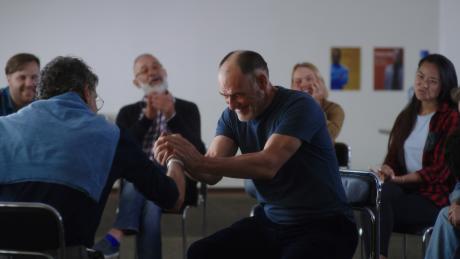
Building the Geriatric Mental Health and Substance Use Workforce

Our Guest Editor: Passionate About Elders’ Resilience

A Note of Introduction

The Cultivation of Psychological Resilience as an Older Adult’s Superpower

Lit. Summaries
- Biographies
The Epic Adventure of ‘The Longest Journey’: A Summary by E.M. Forster
- E.M. Forster
In his essay “The Epic Adventure of ‘The Longest Journey’: A Summary,” E.M. Forster provides a brief overview of the novel “The Longest Journey” by E.M. Forster. Forster highlights the themes and characters of the novel, as well as its significance in the canon of English literature. He argues that “The Longest Journey” is a novel of great depth and complexity, exploring the human condition and the search for meaning in life.
Background of ‘The Longest Journey’
“The Longest Journey” is a novel written by E.M. Forster and published in 1907. The story follows the life of a young man named Rickie Elliot, who is struggling to find his place in the world. Rickie is a sensitive and artistic soul, but he is also plagued by a sense of restlessness and dissatisfaction. He is torn between his desire to pursue his artistic passions and his obligation to conform to the expectations of his family and society. As Rickie embarks on a journey of self-discovery, he encounters a cast of characters who challenge his beliefs and force him to confront his deepest fears and desires. Through his experiences, Rickie learns the importance of following one’s own path and staying true to oneself, even in the face of adversity. “The Longest Journey” is a timeless tale of self-discovery and the search for meaning in a complex and ever-changing world.
Overview of the Plot
The Longest Journey is a novel by E.M. Forster that follows the life of Rickie Elliot, a young man who is struggling to find his place in the world. The novel is divided into two parts, with the first part focusing on Rickie’s life at Cambridge University and the second part following his journey to Italy. Throughout the novel, Rickie grapples with issues of identity, love, and morality, as he tries to navigate the complexities of the world around him. The novel is a powerful exploration of the human condition, and it remains a classic of English literature to this day.
Main Characters
The main characters in “The Longest Journey” are two women, April and her friend, Winifred. April is a young woman who is struggling to find her place in the world. She is intelligent and creative, but she feels stifled by the expectations of her family and society. Winifred, on the other hand, is a confident and outgoing woman who seems to have everything figured out. She is successful in her career and has a loving husband, but she is also hiding a secret that threatens to destroy her perfect life. As the two women embark on a journey of self-discovery, they must confront their fears and insecurities and learn to embrace their true selves.
Themes Explored in the Novel
One of the main themes explored in E.M. Forster’s novel, “The Longest Journey,” is the search for identity and self-discovery. The protagonist, Rickie Elliot, struggles to find his place in the world and understand his own desires and motivations. This theme is also reflected in the other characters, such as Agnes Pembroke, who is torn between her duty to her family and her own desires for independence and love. Another theme explored in the novel is the tension between tradition and modernity. The characters grapple with the changing social and cultural norms of their time, and the conflict between tradition and progress is a recurring motif throughout the story. Additionally, the novel explores the complexities of human relationships and the challenges of communication and understanding between individuals. Through the characters’ interactions and experiences, Forster delves into the intricacies of human connection and the difficulties of truly knowing and connecting with others.
Symbolism and Imagery
Symbolism and Imagery play a significant role in E.M. Forster’s ‘The Longest Journey.’ The novel is filled with various symbols and images that add depth and meaning to the story. For instance, the journey itself is a symbol of self-discovery and personal growth. The protagonist, Rickie Elliot, embarks on a physical and emotional journey that leads him to confront his inner demons and find his true self.
Another prominent symbol in the novel is the river. The river represents the flow of life and the inevitability of change. It is a recurring image throughout the story, and its presence is felt in various ways. For example, when Rickie and his friend Stephen go on a boating trip, they encounter a strong current that nearly drowns them. This experience serves as a metaphor for the challenges and obstacles that Rickie faces on his journey.
The imagery in the novel is also noteworthy. Forster’s vivid descriptions of nature and landscapes create a sense of atmosphere and mood. The lush greenery of the countryside, the misty mornings, and the dark forests all contribute to the novel’s dreamlike quality. The imagery also serves to highlight the contrast between the urban and rural settings, emphasizing the theme of the clash between tradition and modernity.
Overall, the symbolism and imagery in ‘The Longest Journey’ add depth and complexity to the story. They help to convey the novel’s themes and create a rich and immersive reading experience.
Style and Narrative Techniques
E.M. Forster’s “The Longest Journey” is a masterful example of narrative technique and style. The novel is written in a third-person omniscient point of view, allowing the reader to see into the thoughts and feelings of multiple characters. This technique creates a rich and complex narrative that explores the inner lives of the characters and their relationships with each other.
Forster’s writing style is also notable for its vivid descriptions and attention to detail. He paints a vivid picture of the English countryside and the characters’ surroundings, immersing the reader in the world of the novel. Additionally, Forster’s use of symbolism and metaphor adds depth and meaning to the story.
Overall, “The Longest Journey” is a beautifully crafted novel that showcases Forster’s mastery of narrative technique and style.
Reception and Criticism
The reception of “The Longest Journey” was mixed upon its initial publication in 1907. Some critics praised Forster’s ability to capture the complexities of human relationships and the struggles of self-discovery, while others found the novel to be overly sentimental and lacking in plot. However, over time, the novel has come to be regarded as one of Forster’s most accomplished works, with its themes of identity, class, and sexuality resonating with readers across generations. Today, “The Longest Journey” is considered a classic of English literature and a testament to Forster’s skill as a storyteller.
Comparison to Other Works by E.M. Forster
When compared to other works by E.M. Forster, “The Longest Journey” stands out as a departure from his usual themes of social class and the struggle for personal freedom. Instead, this novel delves into the complexities of human relationships and the search for meaning in life. While Forster’s earlier works such as “A Room with a View” and “Howards End” explore the tensions between the upper and middle classes, “The Longest Journey” focuses on the inner turmoil of its protagonist, Rickie Elliot. This shift in focus allows Forster to delve deeper into the human psyche and create a more nuanced and complex character. Additionally, the novel’s exploration of themes such as love, betrayal, and redemption make it a standout work in Forster’s oeuvre. Overall, “The Longest Journey” showcases Forster’s versatility as a writer and his ability to tackle a wide range of themes and subjects with equal skill and insight.
Influence on Literature and Culture
The influence of “The Longest Journey” on literature and culture cannot be overstated. E.M. Forster’s novel has been praised for its exploration of themes such as identity, sexuality, and the search for meaning in life. It has also been noted for its use of symbolism and its complex character development. Many writers and artists have cited “The Longest Journey” as an inspiration for their own work, and it continues to be studied and analyzed by scholars and readers alike. Its impact on literature and culture is a testament to its enduring relevance and power.
Legacy of ‘The Longest Journey’
The legacy of ‘The Longest Journey’ is one that has endured for over two decades. The game’s unique blend of science fiction and fantasy, coupled with its engaging storyline and memorable characters, has made it a cult classic among gamers. Its influence can be seen in many modern games, particularly those that focus on narrative-driven experiences. The game’s success also paved the way for its sequel, ‘Dreamfall: The Longest Journey,’ which was released in 2006. Despite its age, ‘The Longest Journey’ remains a beloved classic that continues to inspire and captivate gamers around the world.
Analysis of Key Scenes
One of the key scenes in ‘The Longest Journey’ is when the protagonist, Rickie Elliot, visits his friend Stephen Wonham at his estate. This scene is significant because it highlights the stark contrast between Rickie’s middle-class upbringing and Stephen’s aristocratic lifestyle. The opulence of Stephen’s home and the extravagance of his lifestyle leave Rickie feeling out of place and uncomfortable. This scene also foreshadows the eventual downfall of Stephen’s character, as his excessive indulgence in pleasure and luxury leads to his eventual ruin. Overall, this scene serves as a commentary on the class divide in society and the dangers of excess and indulgence.
Exploration of the Novel’s Setting
The setting of E.M. Forster’s novel, “The Longest Journey,” is a crucial element in the story’s development. The novel takes place in England during the late 19th and early 20th centuries, a time of great social and cultural change. Forster’s exploration of this setting allows readers to gain a deeper understanding of the characters and their struggles. The novel’s opening scene takes place in Cambridge, where the protagonist, Rickie Elliot, is a student. Forster vividly describes the city’s architecture and atmosphere, setting the stage for the story’s themes of tradition and modernity. As the novel progresses, the setting shifts to the countryside, where Rickie’s family resides. Here, Forster explores the tensions between rural and urban life, as well as the class divisions that exist within English society. Overall, Forster’s exploration of the novel’s setting adds depth and complexity to the story, making “The Longest Journey” a rich and rewarding read.
Historical Context of the Novel
The historical context of E.M. Forster’s novel, “The Longest Journey,” is crucial to understanding the themes and characters within the story. The novel was published in 1907, during a time of great social and cultural change in England. The Victorian era was coming to an end, and the Edwardian era was beginning. This transition was marked by a shift in values and attitudes, particularly towards gender roles and sexuality.
Forster himself was a product of this changing society. He was a member of the Bloomsbury Group, a circle of writers and intellectuals who rejected the strict moral codes of the Victorian era and embraced a more liberal and experimental approach to life and art. This influence is evident in “The Longest Journey,” which explores themes of sexual identity, social class, and the struggle for personal fulfillment in a rapidly changing world.
The novel is set in Cambridge, a city that was also undergoing significant changes during this time. The university was expanding, and new ideas and perspectives were challenging traditional academic disciplines. Forster himself attended King’s College, Cambridge, and his experiences there undoubtedly informed his portrayal of the university in the novel.
Overall, the historical context of “The Longest Journey” provides important insights into the novel’s themes and characters. By understanding the social and cultural changes taking place in England during this time, readers can better appreciate Forster’s exploration of identity, class, and personal fulfillment in a rapidly changing world.
Discussion of the Novel’s Ending
The ending of “The Longest Journey” has been a topic of much discussion among readers and literary critics alike. Some argue that it is a satisfying conclusion to the epic adventure that the novel takes us on, while others find it to be abrupt and unsatisfying.
One interpretation of the ending is that it represents a moment of enlightenment for the protagonist, Rickie Elliot. Throughout the novel, Rickie struggles to find his place in the world and to reconcile his artistic aspirations with the expectations of his family and society. In the final scene, he has a vision of a “great light” that seems to offer him a sense of clarity and purpose.
Others, however, have criticized the ending for its lack of resolution. We are left with many unanswered questions about the fate of the other characters, such as Rickie’s wife Agnes and his friend Stephen. Some have even suggested that the ending is intentionally ambiguous, leaving it up to the reader to decide what happens next.
Regardless of one’s interpretation, it is clear that the ending of “The Longest Journey” is a powerful and thought-provoking conclusion to a novel that explores themes of identity, love, and the search for meaning in life.
Interpretation of the Novel’s Title
The title of E.M. Forster’s novel, “The Longest Journey,” can be interpreted in various ways. On one hand, it can refer to the physical journey that the protagonist, Rickie Elliot, embarks on throughout the novel. From his sheltered upbringing in a small town to his experiences at university and his travels abroad, Rickie’s journey is indeed a long and winding one.
On the other hand, the title can also be seen as a metaphor for the emotional and psychological journey that Rickie undergoes. As he grapples with issues of identity, love, and morality, Rickie’s journey becomes one of self-discovery and growth.
Furthermore, the title can also be interpreted as a commentary on the human experience as a whole. Life itself can be seen as a long and arduous journey, filled with ups and downs, twists and turns. In this sense, Forster’s novel can be seen as a reflection on the universal human experience of navigating the complexities of life.
Overall, the title of “The Longest Journey” is rich with meaning and can be interpreted in a variety of ways, making it a fitting title for Forster’s epic adventure of a novel.
Gender and Sexuality in ‘The Longest Journey’
In “The Longest Journey,” E.M. Forster explores themes of gender and sexuality through the character of Rickie Elliot. Rickie struggles with his own identity and desires, feeling trapped by societal expectations of masculinity and heterosexuality. He is drawn to his friend Ansell, who represents a more fluid and unconventional approach to gender and sexuality. However, Rickie ultimately succumbs to societal pressure and marries a woman, leading to a life of unhappiness and unfulfilled desires. Forster’s portrayal of Rickie’s struggle highlights the limitations and constraints placed on individuals by societal norms and expectations, particularly in regards to gender and sexuality.
Race and Colonialism in ‘The Longest Journey’
In E.M. Forster’s novel, “The Longest Journey,” race and colonialism play a significant role in the story’s themes and character development. The protagonist, Rickie Elliot, is a white, middle-class Englishman who struggles with his identity and place in society. His friend, Agnes Pembroke, is a mixed-race woman who faces discrimination and prejudice due to her ethnicity. The novel also explores the impact of British colonialism on the characters and their relationships with each other. Through these themes, Forster highlights the complexities and injustices of race and colonialism in early 20th century England.
Religion and Spirituality in the Novel
Religion and spirituality play a significant role in E.M. Forster’s novel, “The Longest Journey.” The protagonist, Rickie Elliot, struggles with his faith and beliefs throughout the novel. He is raised in a strict religious household, but as he grows older, he begins to question his beliefs and the teachings of his family.
Rickie’s journey towards self-discovery and spiritual enlightenment is a central theme in the novel. He explores different religions and philosophies, including Buddhism and Hinduism, in an attempt to find meaning and purpose in his life.
Forster also uses religion and spirituality to comment on society and the role of religion in modern life. He critiques the hypocrisy and narrow-mindedness of organized religion, while also acknowledging the importance of spirituality and personal belief.
Overall, “The Longest Journey” is a thought-provoking exploration of religion and spirituality, and the role they play in shaping our lives and beliefs.
The Importance of Education in the Novel
In E.M. Forster’s novel, “The Longest Journey,” education plays a crucial role in the development of the characters and the overall plot. The protagonist, Rickie Elliot, is a young man who struggles to find his place in the world and to understand his own identity. Through his experiences at Cambridge University and his interactions with various mentors and friends, Rickie learns valuable lessons about himself and the world around him. Education is also a theme that runs throughout the novel, as characters grapple with questions of knowledge, truth, and morality. Ultimately, “The Longest Journey” suggests that education is not just about acquiring knowledge, but about discovering one’s own values and beliefs, and learning how to navigate the complexities of life.
“The longest journey you will ever take is the 18 inches from your head to your heart.”
Andrew Bennett British politician
share tweet pin share email print

PERSISTENCE

TEACHING BY EXAMPLE

INCLUDING OTHERS

PULL TOGETHER

INSPIRATION

PERSPECTIVE

The Longest Journey: The Exploration
Discover the highs and lows of the expedition that marked the first circumnavigation of the world., acción cultural española, ac/e.
Antonio Fernández Torres, Guillermo Morán Dauchez (General Archive of the Indies) and Braulio Vázquez Campos (General Archive of the Indies).
The Exploration by Lola Bermúdez (Tannhauser Estudio) Acción Cultural Española, AC/E
"… there are … utopias that occupy a precise and real place, a place that can be located on a map." Michel Foucault, French philosopher.
Europa and Asia by Lola Bermúdez (Tannhauser Estudio) Acción Cultural Española, AC/E
About 500 years ago in Seville, Europe's long-awaited dream of reaching the unexplored, mythical lands of the Orient and the Spice Islands became a reality. Ferdinand Magellan set off on his voyage in 1519, and three years later it became the longest voyage of the era: the first circumnavigation of the world was completed by Juan Sebastián Elcano, captain of the Victoria , and his crew in 1522.
Storm in Puerto Deseado (1769) by Alejo Berlinguero Original Source: Archivo General de Indias
Sailing South: The Time for Navigation
Sanlúcar de Barrameda—Río de la Plata | September 20, 1519—February 10, 1520 (143 days)
The Unknown by Braulio Vázquez Acción Cultural Española, AC/E
With the ships at the ready and the crew on board, the Captain-General ordered the sails to be dropped, and the five ships sailed into the ocean. Magellan wanted to cross the Atlantic and reach the edge of the explored territories as soon as possible. However, he was a distrustful man and hid the details of the passage from his captains. Every change in direction made the other captains suspicious. The Atlantic, with its mix of calm and stormy conditions, brought out the Armada's strengths and weaknesses: they had good ships and good men, but a seed of discord had started to grow among those in command. > Take a virtual tour of the exhibition in the General Archive of the Indies.
Order by Charles I to Ferdinand Magellan and Rui Faleiro / Page 01 Archivos Estatales
In the Charters of Valladolid (Capitulaciones de Valladolid), the King had given detailed, written instructions to Magellan and Faleiro, though Faleiro never made it to sea. The structure of the activities of the expedition was laid out in 74 highly detailed articles. The articles addressed topics such as how they were to navigate and what the rules of living aboard the ships should be. The articles also stressed the importance of maintaining peace and harmony with the people native to where they landed in order to keep trade relations flowing.
Order by Charles I to Ferdinand Magellan and Rui Faleiro Order by Charles I to Ferdinand Magellan and Rui Faleiro / Page 11 Archivos Estatales
Every member of the expedition party also had the right to document the events of the voyage in order to communicate them to the Crown. This undoubtedly fostered the myriad first-hand accounts of the voyage, however, in reality, it was the Monarchy's means of exercising its control over its own representatives and commanders. If anyone could communicate directly with the King, everyone would make sure they carefully abided by his orders.
The Victoria by Antonio Fernández Torres (Tannhauser Estudio) Acción Cultural Española, AC/E
With no speed, no command, dead sails, and the ships' bows at the mercy of the currents, they did not sail in the ocean, but rather floated there. Heat and inactivity settled over the ships, the days went by, the voyage became longer, and water and food was rationed. The inactive crew thought and whispered about the impotence of the navigators and captains. This long period of unsettled calm was a breeding ground for indiscipline and rebellion.
Map of the Government of the Río de la Plata (1683) Original Source: Archivo General de Indias
Finally, the fleet reached Río de la Plata and sailed along the coast of America. For every mile they traveled south, the wind became harder, colder, and more hostile—this was the most dangerous and inhospitable coastline. Exhaustion and doubt invaded the minds of the crew. How far did they have to sail until they found a way through?
Figurative drawing of the difficulties faced by two boats at the command of frigate lieutenant Manuel de Pando (1769) by Alexo Berlinguero Original Source: Archivo General de Indias
In the bay of los Trabajos (possibly current-day Puerto Deseado, Argentina), the crew had to take shelter due to a terrible storm as the Trinidad was in danger."They at last petitioned their admiral, Magellan … to think about going home, to turn back to where the winter was not so harsh … and to be satisfied and content himself with having gone farther than either the boldness or rashness of mortals had ever dared to go as yet." Maximilianus Transylvanus.
Terra Brasilis and the South Atlantic (ca. 1519) by Lopo Homem, Pedro Reinel, Jorge Reinel Original Source: Biblioteca Nacional de Francia
Sailing Into the Unknown: The Extreme South
Río de la Plata—Strait of Magellan | February 2, 1520–November 28, 1520 (300 days)
From the Río de la Plata to the Magellan Strait by Lola Bermúdez (Tannhauser Estudio) Acción Cultural Española, AC/E
Magellan decided to sail as far south as needed, but the southern fall hit them with force and the crew were exhausted and divided. They quickly decided to take shelter in a bay which they named San Julián, and the food supplies were rationed. While there they met the Patagones people, a bloody mutiny took place, and they endured a long and harsh winter that lasted five months. The men were suffering from the cold and hunger, but above all, they feared their captain's determination and silence. This fear spread throughout the crew, and a mutiny eventually broke out.
What do explorers fear?
The scientists and explorers Pedro Duque, Tomás Mazón, Tomás Echegoyen, Kitín Múñoz, Íñigo Múñoz, Matthias Mauer, and Ignacio Orcada, among others, speak of their fears as they embarked on a voyage into the unknown.
Coat of arms of Gonzalo Gómez Espinosa (1528) Original Source: Archivo General de Indias
Coats of arms of Gonzalo Gómez de Espinosa
Many of the coats of arms bestowed upon explorers depicted events from their adventures and featured on their furniture. Such items have become important symbolic artefacts of the events. One example of this is the coat of arms bestowed upon Gonzalo Gómez de Espinosa, the chief constable who squashed the mutiny against Magellan in San Julián. This coat of arms depicts his participation in the circumnavigation of the world as well as particular events that occurred during the expedition.
Map of the Kingdom of Chile (ca. 1646) Original Source: Archivo General de Indias
The Strait: The Point of No Return
Strait of Magellan | October 21, 1520–November 28, 1520 (37 days)
The Strait by Braulio Vázquez Acción Cultural Española, AC/E
With the arrival of a southern spring, the four ships set course to the south. After only three days sailing, they found a bay, and behind it lay a maze of canals and expanses that disappeared into the mountains. Could this be the pass into the South Sea they had hoped for?
Maritime Map of the Magellan Strait (1769) by Juan de la Cruz Cano y Olmedilla Original Source: Archivo General de Indias
A map created by the cartographer Juan de la Cruz Cano y Olmedilla shows the labyrinth of the Strait of Magellan, made up of a maze of canals. The expedition party crossed dense, frozen waters in the daunting silence of the wilderness. Their solitude was only broken by bursts of flame in the night in the southerly lands Magellan named Tierra del Fuego (Land of Fire). Battling a glacial ocean, successive explorations were undertaken in search of the open waters of the Pacific.
Map of the former Kingdom of Chile (1646) Original Source: Archivo General de Indias
This map of Patagonia, Tierra del Fuego, and Chile (which is in an unusual orientation) depicts the so-called giants (large Patagones natives), who the crew were astounded by, and tailed people (known as rabudos). This gives some insight into the myths that spread throughout the continent of America.
Map of the extreme south of the American continent (1671-08-29) Original Source: Archivo General de Indias
For over a month, and with guns raised, Magellan's fleet explored and crossed the maze of tides and winds of the strait that would one day bear his name. They finally succeeded in finding a pass on November 28 and ventured into a new sea. They had achieved their first goal, but by then only three ships remained: the Trinidad , the Victoria , and the Concepción . The San Antonio had deserted them.
Information from Álvaro de la Mezquita on the takeover of the San Antonio Information from Álvaro de la Mezquita on the takeover of the San Antonio / Page 03 Archivos Estatales
The San Antonio arrived at the port of Las Muelas in Seville in May 1521 under strange circumstances: in addition to deserting the expedition, the crew had taken their captain, Antonio de Mezquita, prisoner following a mutiny against him for having refused to abandon Magellan, to whom he was related. It was clear to officials at the House of Trade that they needed to question all those involved in order to unravel the story of what lead to such an unprecedented turn of events.
Letter from Juan López de Recalde to Juan Rodríguez Fonseca Letter from Juan López de Recalde to Juan Rodríguez Fonseca / Page 01 by Juan López de Recalde Archivos Estatales
The head bookkeeper, Juan López de Recalde, undertook the arduous task of interrogating the sailors one by one, and the outcome was outlined in this letter dated May 12, 1521, which he sent to the Bishop of Burgos, Juan Rodríguez de Fonseca, who was head of the Council of the Indies. The sailors testified before López de Recalde, stating that they had decided to abandon the expedition because they believed—in error—that the passage Magellan was looking for was inviable, and they presumed the rest of the ships had been lost to their exploration into the strait. The Spanish authorities were not very optimistic about the expedition given these were the first reports they received on the fate of Magellan's voyage.
Theatrum Orbis Terrarum (1588) by Abraham Ortelio Original Source: Archivo General de Indias
The Pacific: The Endless Ocean
Strait of Magellan—Mariana Islands | November 28, 1520–March 6, 1521 (a 99-day crossing)
The Pacific Ocean by Braulio Vázquez Acción Cultural Española, AC/E
Leaving the pass in their wake, the three ships entered what they knew as the South Sea. They imagined they were sailing toward India, near the Moluccas, unaware that they were crossing the largest ocean on earth. Europeans had never crossed this ocean before, and their maps were of no use to them there.
It took them 100 days to cross the Pacific Ocean. The crew suffered from hunger, disease, and confusion as they sailed. For 100 days and 100 nights, the ocean and the earth showed humans just how vast it really was. Magellan was aware of his mistake: no one would ever wish to undertake the same voyage again.
Theatrum Orbis Terrarum Theatrum Orbis Terrarum (1588) by Abraham Ortelio Archivos Estatales
The map of the known world that was used up until the early 16th century came directly from the classical tradition of the Greek geographer and mathematician Ptolemy (2nd century AD). Spurred on by the first expeditions beyond Europe, humanists found a more accurate way to describe and map out the relief of the earth. Using astronomical calculations and observation, they discovered how to use longitude to determine the position of ships at sea in relation to a specific point.
In the 16th century, the Flemish scholar and merchant Abraham Ortelius (Amberes, 1527–98), cosmographer to King Philip II of Spain, published an atlas that brought together all the maps of the known world as well as new discoveries. In doing so, he portrayed America, the discovery of the Pacific by Vasco Núñez de Balboa in 1513, and the strait discovered by Magellan. In total, Ortelio used 87 maps which had been created by other voyagers and mapmakers.
Night Acción Cultural Española, AC/E
The night. Darkness and silence.
Through the night, the ships sailed in darkness. Watchmen manned the ships and followed the captain's lantern. To prevent any fires, only a small lantern was used to light the compass that was housed in the binnacle. A vigilant pageboy stood next to the lantern, looking after it and the only clock aboard the ship: an hourglass. The watchmen followed the sounds of the sheets, sails, and the bow of the flagship as it chopped through the waves. They could make do without light—they just needed silence, which was broken every half-hour by a child's voice shouting out the time as he turned the hourglass.
The Longest Voyage. Sea Acción Cultural Española, AC/E
Continue to the next stage of the adventure: The Longest Voyage: The Destination .
Adaptation of the exhibition " The Longest Journey: The First Around the World ". Organizers: Spanish Cultural Action , Ministry of Culture. General Archive of the Indies Curated by: Antonio Fernández Torres, Guillermo Morán Dauchez, Braulio Vázquez Campos Program: Raquel Mesa Images: Archivo General de Indias, Tannhauser Estudio > See the digital catalog > Download the digital catalog > See brochure This exhibition is part of the First Voyage Around the World project.
The Longest Voyage: The Dream
Cervantes, times of childhood and youth, archivos estatales, the longest journey: setting sail, cervantes: a life in the golden age, cervantes, the brilliant author, the longest voyage: the destination, la casa lonja de mercaderes in seville, the longest voyage: the return, paper restoration processes, the longest voyage: transformation, the road to a new era.

Example sentences long journey
Definition of 'journey' journey.

Definition of 'long' long
Cobuild collocations long journey, browse alphabetically long journey.
- Long Island Sound
- long journey
- long jumper
- All ENGLISH words that begin with 'L'
Related terms of long journey
- Long Day's Journey Into Night
Quick word challenge
Quiz Review
Score: 0 / 5
Wordle Helper

Scrabble Tools

IMAGES
VIDEO
COMMENTS
The proverb 'A journey of a thousand miles begins with a single step' is first found in the Tao Te Ching, which is a classical Chinese Taoist text usually credited to Laozi (a.k.a. Lao Tzu), and probably written between the 4th and 6th century BC. The original text is: "A journey of a thousand li [a Chinese mile] starts beneath one's feet"
The Longest Distance in the World Is From the Head to the Heart. Lao Tzu said that the first step on the path to wisdom is the ability to say, "I don't know." We like to believe that we know a ...
The journey of a thousand miles begins with one step. The quote by Lao Tzu, "The journey of a thousand miles begins with one step," encapsulates an essential and profound truth about life and achieving our goals. It emphasizes the significance of taking that initial step, no matter how small or insignificant it may seem, as it is the catalyst ...
The longest journey you will make in your life is from your head to your heart. It is especially true in transferring the knowledge about God in your head and being able to experience the ...
Jyutping. Cin1 lei5 zi1 hang4, ci2 jyu1 zuk1 ha6. "A journey of a thousand miles begins with a single step" is a common saying that originated from a Chinese proverb. The quotation is from Chapter 64 of the Dao De Jing ascribed to Laozi, [1] although it is also erroneously ascribed to his contemporary Confucius. [2]
Life is not a project, but a journey to be enjoyed.". - Catherine Pulsifer. "The journey between what you once were and who you are now becoming is where the dance of life really takes place ...
What you think, what you feel, what you want, and what you do are all bound up together. Your mind and heart are distinguishable but inseparable. Maybe you've heard something like this, "The longest journey is the 18 inches from your head to your heart.". Think about what that is saying: What you think and what you feel are totally different.
A Sioux Native American saying: The longest journey you will make in your life is from your head to your heart. It is especially true in transferring the knowledge about God in your head and being able to experience the excitement of loving God in your heart. I am on the same journey, for I understand the tremendous odds against us transferring ...
Origin of "A Journey of a Thousand Miles Begins with a Single Step". "A Journey of a Thousand Miles Begins with a Single Step" is a saying by an ancient Chinese philosopher. The original text is "A journey of a thousand li starts beneath one's feet.". Here li means distance. This quote was first used in Chinese classic text; Tao ...
Even the longest and most difficult ventures have a starting point. 2020, Malcolm Turnbull, The Reluctant Republic, Hardie Grant Publishing, →ISBN: It has often been said that a journey of a thousand miles begins with a single step. We have made many steps in our journey towards the republic, and perhaps are closer to our destination than we imagine ...
"A Journey of a Thousand Miles Begins With a Single Step" - The Meaning "A journey of a thousand miles begins with a single step" is a Chinese proverb that originates from the Tao te Ching.The meaning of this saying is that even the most difficult and longest ventures have a specific starting point. Similarly, it implies that daunting tasks can typically be begun by doing something ...
by Rev. Elizabeth Rowley, Spiritual Director. September 6, 2019. It is said that the longest journey you will ever make is from your head to your heart. We are always thinking, judging, or perceiving everything in our lives in a particular way. There is a safe feeling in living in thought, it's what you know, but there comes a time when you ...
The Longest Journey Is from the Head to the Heart. As I've written in prior blogs, most of us have been programmed since childhood to live out of fear. We've also been programmed to live in our heads-meaning thinking with our brains. For me, the most important journey a human being makes in their lifetime is only about a foot long: it's ...
longest the longest journey begins with a single step proverbial saying, late 20th century, often used to emphasize how important a single decision may be. The saying is ultimately derived from the Chinese philosopher and founder of Taoism Lao Tzu (c.604-c.531 bc), who says in the Tao-te Ching, 'the journey of a thousand li starts from where one stands.' the longest way round is the ...
That is a lifelong challenge. The journey from head, full of concepts, laws, ideas into the heart that is full of love. They say the distance between the head and the heart is only 18 inches. But the journey between them takes the whole life. Authenticity is achieved when there is harmony between the head and the heart.
The Longest Journey. August 19, 2020. The Sioux believed that the longest journey we can make in this life is from the head to the heart. This is also the longest spiritual journey we can make; it is the pilgrimage of prayer. We think of the heart as emotional, and it is, but it is also deeply spiritual. Are you living your life from the mind?
The longest journey, it's been said, is the journey inward. This is the longest and most uncharted, for it is where aging converges with spirituality. And in mainstream gerontology, it's only quite recently, really, that this convergence has received its share of attention, that aging has been seen as a naturally spiritualizing process ...
"The Longest Journey" is a timeless tale of self-discovery and the search for meaning in a complex and ever-changing world. Overview of the Plot. The Longest Journey is a novel by E.M. Forster that follows the life of Rickie Elliot, a young man who is struggling to find his place in the world.
The minute I know my heart, the feeling is an overwhelming sense of peace and joy. Here are some other inspiring quotes you might like. An inspirational quote by Andrew Bennett about the value of Compassion: "The longest journey you will ever take is the 18 inches from your head to your heart.".
Dreamfall: The Longest Journey (Bokmål: Drømmefall: Den Lengste Reisen) is an adventure video game developed by Funcom for Microsoft Windows and Xbox platforms in April 2006. On 1 March 2007, a sequel entitled Dreamfall Chapters was announced, and Funcom reportedly considered the idea of a massively multiplayer online game set in The Longest Journey universe.
The "long journey" that Scout and Jem embark on at the end of Chapter 27 into Chapter 28 is both physical and emotional. Physically, they have to get home from the high school in the dark, and ...
About 500 years ago in Seville, Europe's long-awaited dream of reaching the unexplored, mythical lands of the Orient and the Spice Islands became a reality. Ferdinand Magellan set off on his voyage in 1519, and three years later it became the longest voyage of the era: the first circumnavigation of the world was completed by Juan Sebastián ...
LONG JOURNEY definition | Meaning, pronunciation, translations and examples